Teachers with impact effect


















































































Every student learns by design, not by chance
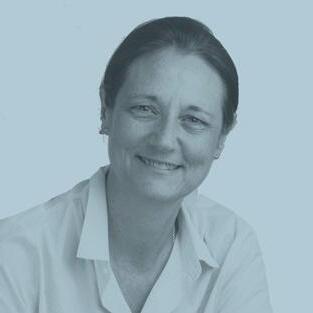 Ana Moreno Salvo Director of Impuls Educació
Ana Moreno Salvo Director of Impuls Educació
Dear reader,
In the latest macro study on what factors positively impact student learning and education, John Hattie concludes that: “teachers should focus more on the impact of their teaching than on the quality of that teaching,... schools should give visibility to the teachers with the greatest impact and their methods for achieving it”. And, as the author of the bestseller "Visible Learning" repeats, quality teaching is found in almost all schools, so most schools have acceptable average results, or even good or very good ones. But that does not mean that all of their teachers or educational leaders are doing a good job. It does mean that they have some teachers who are doing a really great job and sustain good results year after year. If we add a favourable learning environment in the family, it is even better. However, this does not mean that all students benefit from that quality. For this to happen, we should also measure whether each student at a school is progressing in their education and learning over one year in proportion to what they should learn for a year of school work. That is when we should really be proud of our school.
But how do we achieve this progress? According to Doug Lemov, the creator of the “Teach like a Champion” method of teaching excellence, we achieve it with top-quality continuing professional development for teachers. We do it with training to ensure that teachers know how to create a classroom culture that is conducive to learning and know how to be the best teacher for each of their students, creating a positive relationship with them that boosts their interest in learning on a daily basis.
However, that is not all. In “Well-Being in Schools”, Andy Hargreaves further encourages educational systems to take into account the development of students as human beings, in all their dimensions and as a whole, to ensure that the system itself is a safe place to be happy and learn without the threat of failure or exclusion. In Hargreaves' opinion, we have to overcome the limited focus on socioemotional factors and instead create healthy environments specially designed to meet human beings' basic needs, especially in terms of their expectations and integral development.
We have dedicated this new issue of "Diàlegs" magazine to the teaching profession because we believe--and this is corroborated by evidence--that teachers are the key to quality education. We wanted to draw from prominent experts from all over the world, from Australia to Canada, from England to the United States, from Colombia and, of course, Spain. Guy Claxton speaks about the importance of changing the paradigm of learning, Miquel Àngel Prats about the role of technology and digital competency in teaching, Mercè Gisbert and Joan Anton Sánchez about teacher training, Stephen Harris about how to design and implement an innovative educational model, jettisoning any dead weight from the past thanks to a new model of school and, of course, of teachers.
This time, our tribute goes to Robert Swartz, a dear friend who left us last October after heroically dedicating his life to improving education.
I hope you enjoy it.
project
INTERVIEW WITH STEPHEN HARRIS AND LETICIA LIPP
6
INTERVIEW WITH GUY CLAXTON
24
INTERVIEW WITH JOHN HATTIE
Every student learns by design, not by chance
14

2
EDITORIAL BOARD
Management and interviews
Ana Moreno
Publications
Jordi Viladrosa
Original Design
Guillem Batchellí
Design and Communication
Maria Font
Illustrations
Maria Yuling Martorell
Editorial department and subscriptions
Impuls Educació
Avda. Montserrat Roig, 3 08195 Sant Cugat del Vallès revista@impulseducacio.org
https://impulseducacio.org/
ISSN 2938-2122
DL B7336-2023


























The heroism of giving one's life until one's last breath to help people think better












Stephen Harris is co-founder and director of Learnlife in Barcelona. In 2005, he founded the Sydney Centre for Innovation in Learning (SCIL). His vision is to integrate innovation in schools by leveraging the passion and experience of the teams that have worked with him. He has in-depth knowledge of leadership, innovation and culture. He is a 2017 recipient of the prestigious John Laing Award from the Principals Australia Institute (PAI), given to exceptional school leaders.
Leticia Lipp is one of the founding members of Learnlife. She has been head and leader of the Human Resources and Culture teams since Learnlife was founded. Her current mission is to grow Learnlife's partner schools towards innovation. She also acts as a head-hunter searching for talent such as principals, pedagogical leaders, teachers and learning experience designers.
In 2023, Learnlife was chosen by hundrED as one of the 100 educational innovation initiatives with the greatest future impact on educational transformation. Can you tell us the keys to the Learnlife transformation project and what makes it different from other innovation projects?
Stephen Harris (SH): I found it interesting that only two of the 100 innovation programmes recognised by hundrED were truly school-based. It was encouraging to see that what we were doing was on a larger scale.
What are the keys to transformation?
We have managed to define a framework and simply carry it out. We have been aware that in order to create a different model, it is essential
to identify what can limit creativity and thinking. Learnlife has engaged in an evolutionary process towards what we really think is at the core of good learning, that is, what a teacher should be able to understand. Therefore, we can take this model to any context. You have to be able to effect the transformation. Change needs to be actionable at the classroom, school or system level, if needed. The most important thing in learning is for the learner
What is important in learning is for the learner to experience a world of functional relationships
to experience a world of functional relationships.
If you enter a community and feel threatened, or if there is a power imbalance, that will limit your learning. The bottom line is to make positive relationships central to everything else. Once that is achieved, you can begin to build trust and a culture of learning in the direction you want to go. I guess the key to our project is understanding where we are starting from with a very clear sense of purpose for each child, each student and each adult. And all this takes place within a mutually positive relational experience.
Learnlife is a very young project, founded in 2017. You had to choose and train teachers in a
brief period of time. How would you describe the role of a Learnlife School teacher?
SH: What makes the difference to us is that, if we get rid of the idea that there is only one way to go, any school or community can get students to do well on a test at age 18.
But, five years after finishing school, the most important thing is: Has that student gone on to learn? Has he or she started to make an impact somewhere in the world, on how to address some of the world's major problems? If there is no evidence of this, then the country's educational system has to be questioned.
I have worked in Rwanda, in central Africa, and the fact is that they manage to get 97% of their children into school, a much higher rate than other African countries. But, despite being in school for twelve years, the unemployment rate is still 85%, as if they had never been to school. The problem lies in what happens at school. The teacher thinks that his or her only purpose is to convey information and knowledge to the children. That is the problem.
How do we select and train our teachers in this brief time? First of all, we have understood that there is urgency. If we look at what has happened in the world of education in the last six months, it seems that AI, the main language models, ChatGPT and so on have suddenly come to schools. But they have actually been in existence for ten years. The world of artificial intelligence did not arrive in November 2022. It's been here for a while, but schools haven't caught on. That's because the systems that train teachers are still focused on very
Five years after finishing school, has that student continued to learn?
narrow goals, such as “your kids have to take this test so they can get into this university”. It's a transactional world. For us, a teacher is a person capable of guiding, orienting, training, adapting and being agile according to students' needs. All of these things are part of a teacher's role, and we have sought out the right people.
I don't know if you've heard of Alvin Toffler, the writer. In 1979, he wrote that the twenty-first century was going to be the century of learning, unlearning and relearning. It's a very simple but incredibly insightful statement, because until the advent of the Internet, knowledge was a sort of defined commodity that you got from books or people. Now it's universal. We have teachers coming into our system burdened with an old school concept and the expectation that their job is to keep the kids quiet and the inspector happy or to get the kids to pass the test. We want to get rid of all this because it limits children's opportunities. For us, a teacher is a learning guide.
Our challenge is to focus on finding the right person with the right mindset, because we don't have time to change people's mindsets. Then we can work with them easily because we can show them that things can be different. The problem is that it causes thousands of young teachers to leave teaching after five years, and there is no need for this to happen if their experience is positive and not stressful, as it is in many countries.
Leticia Lipp (LL): “Learning guides', the name we call teachers at Learnlife, are people who promote passion and put the responsibility for learning back on the children. It's not about controlling classroom behaviour and trying to differentiate” it's about establishing a positive relationship and accountability. The student's responsibility is the student's, not the teacher's. That is an essential difference. Students should not have the attitude of “I have to follow the rules', “I don't want to get
Learning guides are people who promote passion and put the responsibility for learning back on the child
kicked out of class', “I have to behave”, “I have to get good grades to make my parents happy”. This still happens far too often. Children don't do it for themselves, they do it for their parents or their teachers. And that is what changes with learners and the relationship between the teacher and the learner in guided learning.
Learnlife schools are called Hubs (Urban Hub, ECO Hub). Why did you choose this name? How would you describe the learning environment you are trying to build?
SH: To get people out of their previous thinking about schools, like “classroom”, “hallway”, “bell”, “schedule” and everything else, we wanted to create a different universe of words so that kids would see what was happening in a very different way. So we decided to stop using the word “school” because for many children it is loaded with negative connotations. Interestingly, when we started, the word “maths' was the most negative word for children. “School” was the second and “teacher” the third. In contrast, the word “hub” is just a word used in business. You have business hubs, which can be an entire city, part of a city or even a small community. So, basically, we chose the name because it was different, it was simple and it shows that this place is a specific community.
The Urban Hub is a community of teenage students attending a programme in the centre of Barcelona. And the Eco Hub is a community of younger students attending a more nature-based
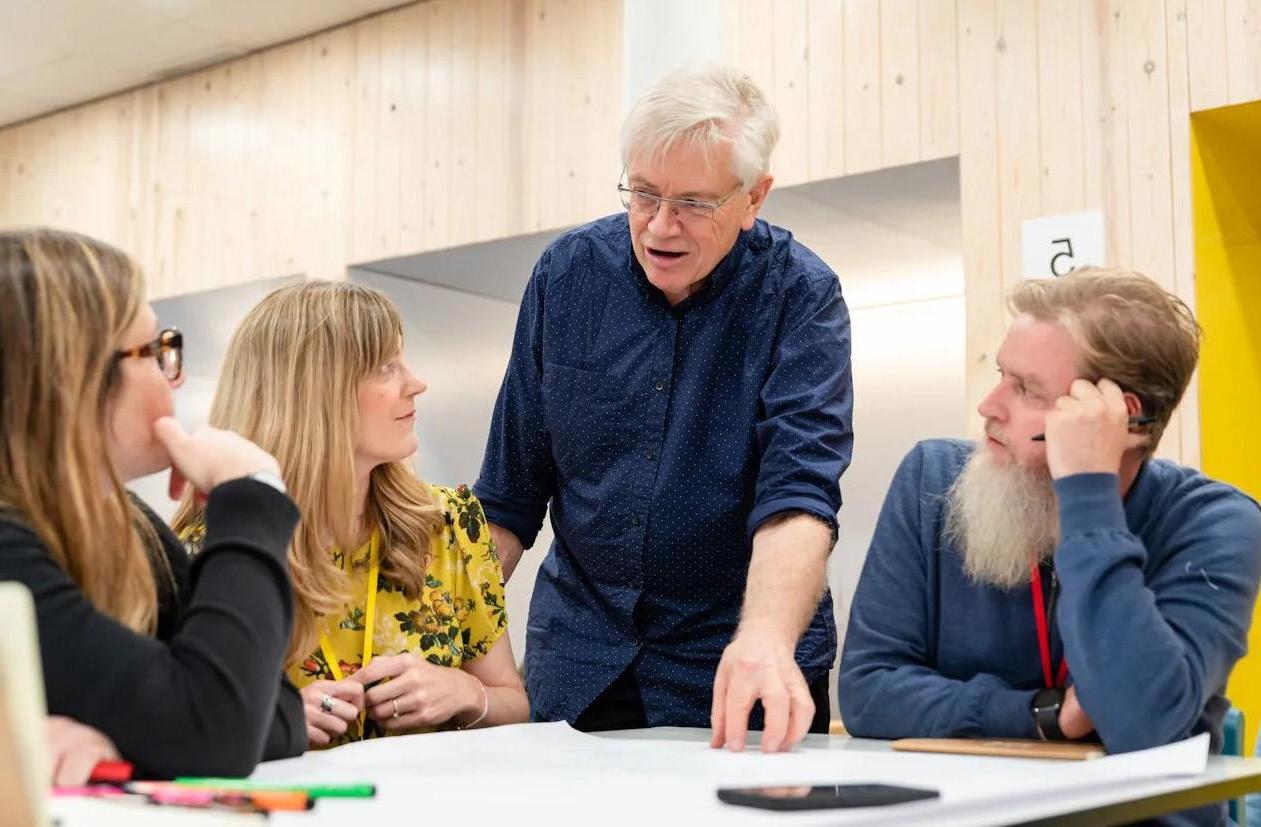
programme in Castelldefels. How would we describe the learning environment? Well, we want to create a community where the learning culture is very strong. If we take into account the world in which children live, we know that social media have an impact on them. Is screen time limited? Are cell phones limited? Some countries prohibit ChatGPT. What we would say is that we don't want children to feel that their culture, their parents' culture, their ethnic culture, their love of soccer, sports, surfing or shopping is wrong or not valued. What we want, however, is a stronger culture that they adopt subliminally, without thinking, when they enter the hub, so that when they arrive they get the sense that they are here to learn.
That is what we are trying to
establish: an environment where the learning culture is strong and unconscious. It is there, and it drives the individual in their choices and behaviours and desire to participate in the programmes.
Why design a new age-based learning pathway for students unlike the usual one: adventurers, discoverers, pioneers in primary school and explorers, creators, changemakers in secondary school? Can you briefly explain the role of the teacher in guiding students along these pathways?
SH: When we talk about the students' pathway being different from the usual one, it actually isn't. If you look at virtually every country in the world and check their curricular documents, they are all based on step-by-step
learning. In the vast majority of documents, one stage covers two calendar years. In other words, six and seven years old is one stage, eight and nine years old is another. What we have done, again, is change the word. We have removed “Stage One”, which means nothing, and called it “Adventurers'. It's a much more interesting word to get kids to join the programme. I think about the number of schools that have the names one, two, three, four, five, six or just completely meaningless
What we want is a strong learning culture that they adopt when they enter the school© Estudio Alejos
If a child has a problem, first look at the system, because it may be the cause of the problem
bureaucratic names on the classroom doors.
I prefer to get kids into an Eco Hub as “Adventurers' to stimulate their thinking. So our “Adventurers' are usually six and seven, “Discoverers' eight and nine, “Pioneers' ten and eleven or so in elementary school, and then in secondary school our “Explorers' are twelve and thirteen, “Makers' fourteen and fifteen and “Changemakers' sixteen or older. All we have done is say why should a child who can speak six languages and is very good at intuiting scientific concepts sit in Adventurers when she is clearly capable of so much more? We are not rigid in saying “just because you are seven years old, you have to be sitting in this room”. We have a set of competencies that must be visible and measurable for a child to move from one programme to the next. So if we look at Creators who are going to become Changemakers, we ask: Do they know how to make a public presentation? Can they write? What projects have they been working on? What is the evidence of their learning? Is it enough for them to move up to the next programme? Are there any projects they are passionate about? Have they been successful or have they encountered any difficulties? It is good for someone to make an effort as long as they recognise what the struggle is all about. These criteria for passing are the guide to what the kids need to demonstrate to us so we know they are ready to move on to the next programme.
The teacher's role is to intervene when necessary. If you have a child who has difficulty engaging, you don't just tell them to sit down, shut up
and look straight ahead. You need to find out what is blocking their engagement. What can we change as adults to unleash a love of learning? To me, that's a fundamental change that any school and any teacher can make. If there is an obvious problem with a child, don't blame the child. First look at the system, because it may be the cause of the problem.
What are the key aspects of training to become better teachers, or “learning guides', as you call them?
SH: Trust is the most fundamental aspect. If there is no trust in the community, teachers are going to have difficulties. There are many areas where it is very easy to lose trust. And if you don't have trust, you're not going to move forward. Teachers around the world are told they have to teach a new generation to collaborate, but the reality is that probably 95% of teachers are awful collaborators because they have never been taught.
In order for a teacher to be the best “learning guide”, we need to focus on the problems that may prevent them from getting there. We have to make sure that they have a psychologically safe environment in which there is trust. We have to make sure they understand where they're going and why things are a little different, because otherwise it's very tempting to just go back to where they were. They have to understand what works. John Hattie's research clearly shows that timely feedback is one of the most powerful determinants of learning growth. How many schools keep a child's project or essay for three or four weeks before returning it to them? You have to have a system where you have that relationship and those conversations that allow you to give immediate feedback, because that is the powerful change. That's how trust grows. The impact of trust is that you can move from cooperation to
collaboration. The impact of positive relationships is that you can feel safe enough with me to raise any difficult issue because I'm not going to question your loyalty or anything else. I will try to help you grow in that context.
Faced with a project as innovative as Learnlife, what is the process of creating a teaching team that works effectively?
LL: At Learnlife we had the luxury of building the team from scratch. We were very thorough in the way we recruited and chose people. Typically, an interview with a group of experts or discussions with adults are held. In our case, it all started with a conversation, but we wanted to see people in action with the children in an assessment context and a team context, because we were looking for people who had the right “why”. That is, they personally wanted to innovate and change education for themselves as a kind of intrinsic motivation. We wanted them to have the ability to be good collaborators and build positive relationships with the children. In this way, we make decisions with the children about who their learning guides and team should be in the future.
It was an inclusive form of teambuilding. Genuine trust is essential. As Stephen was saying, having a culture that creates a safe space or even a brave environment for people to say when things are difficult for them is essential in that hiring process.
SH: As leaders, as recruiters, we have to have the skills to know how to manage a team. There are many school principals who have never been taught that skill. There is a
The impact of trust is that you can move from cooperation to collaboration
fundamental problem if a school leader does not know how to listen, create a safe space or build a team.
Once on the team, everyone needs to grow and feel that they contribute to the mission. Could you tell us the keys to getting each person in the right “seat”, given their profile and aspirations?
LL: We are clear about the competencies needed to be a good learning guide. We conduct a very thorough competency assessment. The goal is to demonstrate flexibility and agility, as well as keen self-awareness and the ability to recognise emotions and to set and maintain healthy boundaries. Executive functioning, decisionmaking, collaboration, positive relationships, creativity, the ability to design learning experiences... all of
these are essential.
We do not have a set curriculum, but we do partly use the state curriculum. Our intention is for them to change it and turn it into play-based learning, challenge-based learning, nature-based learning and so on. A learning guide is a designer, but also a planner and a facilitator. Learnlife people have changed. They came in as product managers and are now learning guides.
What am I good at and how could I use these skills? For example in the primary programme we find that the different learning guides on the learning team have complementary skills, so some people are engineering- and coding-minded, others are very good with digital media and videos and others are caring. Others specialise in special needs or deal with health and
safety. We try to assemble teams that complement each other and to ensure that people change, grow and evolve. I guess this is also a reason why we don't really need a retention strategy.
Just today I read an email from a person who has been with us for five years, who came from elsewhere and now has a completely different role and is very happy to have been able to grow and evolve. This is one of the reasons people stay, as well as because from the beginning they are strongly aligned with your purpose. It is much more than a job. This is meaningful to them, and they come here to be who they are. They don't just come to work.
Leading the team of professionals at Learnlife must be a complex task. What types of leadership are

A learning guide is a designer, but also a planner and a facilitator
needed? How is this leadership structured and energised?
LL: Everyone at Learnlife has to be a leader. Self-leadership is the most essential factor because that is the only way you can lead a team or a programme. It is more about listening than talking. It is practical leadership. You are a role model. If you go into the urban school, you don't know who the founder is, who the learning guide is or who the teenage learner is, because everyone is more or less at the same level. It is a distributed leadership model. I would say that everyone can have an influence, everyone can take a decision, as long as the people affected by that decision are consulted, and experts are consulted. I guess that's also what keeps people here: the opportunity to visibly see the impact of their work and their ideas.
SH: Leaders have to learn throughout their lives. You don't get to this position to say, “I've made it, I've got an office, I've got people working for me”. Learnlife is nothing like that. There is no office. The space is shared by everyone. So I have to be able to rid myself of any perception I may have that leadership is about hierarchy, because leadership is about leading and it's about serving. If a chair needs to be moved, if there's a faucet that doesn't work, I'm not going to ask someone to fix it. I will try to solve it myself, because what we want the kids to learn are the same skills that I show in problemsolving, in challenge-based thinking, in creative thinking. If I can't do it right, how are they going to learn?


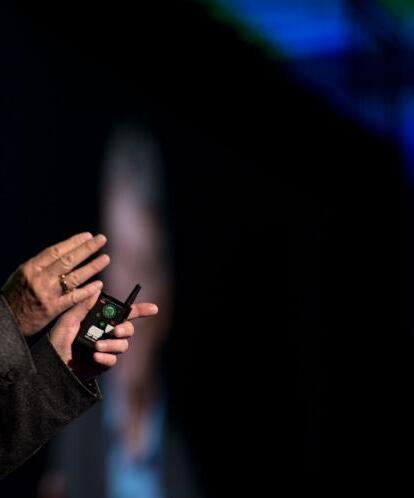
John Hattie (New Zealand, 1950) is Emeritus Professor at the Melbourne Graduate School of Education. He is also president of the Australian Institute of Teaching and School Leaders and co-director of the Hattie Family Foundation.
More than 250 million students have participated In his study, “Visible Learning”, based on evidence-informed education. He has just published "Visible Learning: The Sequel", which updates his previous book and highlights the need for teachers to consider assessing the impact of that evidence on student learning in their classrooms.
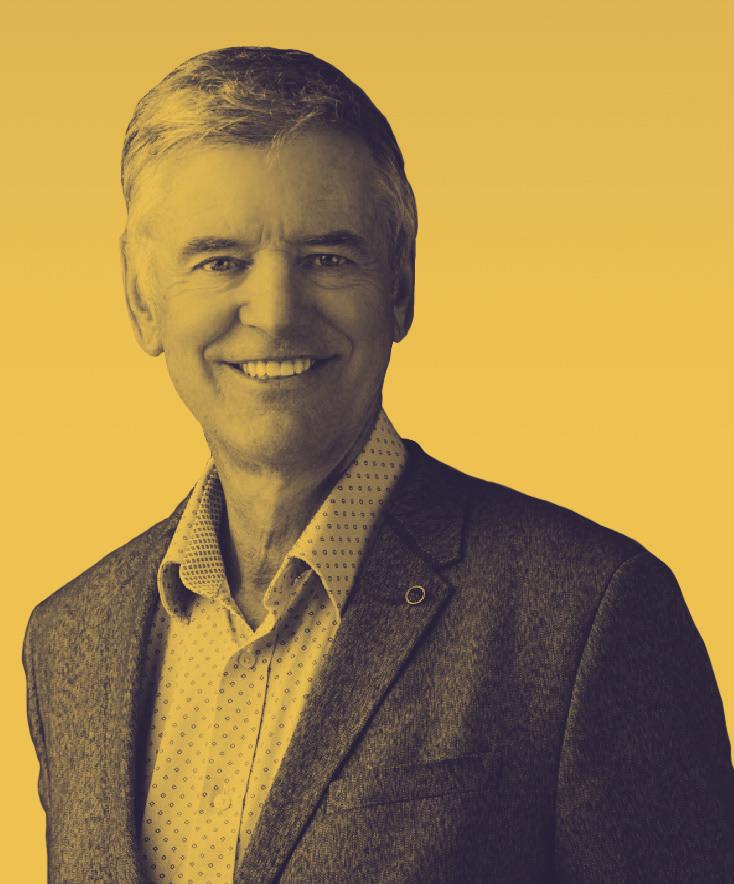 by Ana Moreno Salvo
by Ana Moreno Salvo
Teachers should focus on the impact of their teaching on learning
To what extent does the educational excellence of a school depend on the professionalism of its teachers? What does the scientific evidence tell us about the essential features of quality teaching from the teachers' vantage point?
Teachers are the ones who can have the greatest effect on a school. The main source of variation comes mainly from the students' attributes and then from teachers and school principals. This means that we need to analyse the variability of teacher impact. The greatest influence is related to the teacher's professionalism and experience. This is a very exciting finding: it shows that there is a lot of excellence in our countries' schools. Excellence is all around us. The main problem is that the variability of teacher impact is greater within schools than between schools. Thus, there is variability within the same school. The main message I want to convey is to ask school principals to have the courage to reliably identify teachers who have a high impact, form a coalition around them and invite others to join it.
What I want those great teachers
Principals should identify teachers who have a high impact, form a coalition with them and invite others to join it
to do is to think more out loud, because what the teachers do isn't important; what matters is how they think about what they do. What are the thought processes underlying these great teachers? How do they think? How do they use their evaluative thinking and make decisions on the fly? What happens, however, is that teachers get together and talk about what they do. They talk about curriculum, lessons, students and assessments. And they should talk more about the decisions they make, their interpretations. I want them to critically evaluate each other, because that is what makes all the difference in many powerful schools. What is the difference between highimpact and low-impact teachers? Frankly, as I travel the world, I hear your ideas and see a lot of excellence.
In your latest book, “Visible Learning: The Sequel”, you say, “every student should have a great teacher by design, not by chance”.
What are the keys to creating a great teacher?
The greatest effect on students is achieved when teachers are willing to work together to evaluate their impact. That has a huge effect because teachers are very good critics, in the best sense of the word. They are very good at finding multiple interpretations when they have school leaders who give them the confidence to raise teaching problems or student problems to professional learning communities without prejudices. It often comes down to this key skill: putting yourself in other teachers' shoes and understanding their point of view, and putting yourself in your students' shoes and understanding what it means to them.
We always talk about teaching, and frankly, I hardly care about teaching. What I care about is the impact of teaching. It matters to me because great teachers are “nosy” in many ways: they want to know
The greatest effect on students is achieved when teachers are willing to work together to evaluate their impact
how their students think, what their blocks are, what their barriers are. They want to know how hard they work, because learning is hard work. Learning involves a great deal of effort. Learning means making many mistakes. The fact that the teacher has created a climate not only between the teacher and the students but among the students themselves makes it safe to make mistakes, and those mistakes are seen as learning opportunities, not sources of embarrassment. Teachers who create a climate of safety to take on challenges in their classrooms, who know their students and their students' willingness to take on challenges, can listen to their students think out loud and thus track their learning process.
Learning has to do with “something”. Teachers want their students to acquire knowledge and skills, but they also want them to solve problems. Too often we ask whether we should teach explicitly or whether we should teach problemsolving. Great teachers are ambitious. They want to do both. They know when to focus on factual content and when to focus on problems. Great teachers seem to work backwards: they determine what the success criteria are for the problems they want their students to solve, as well as what skills and knowledge they need to solve those problems. And then they teach both. No child is left behind. Children are very clear about what success is and what it means to be good enough in class. They create that climate with the students. “Challenge, challenge, challenge, challenge, trial, error, error, error, deliberate practise, seek feedback”. In these classrooms, you can feel and hear everyone's passion for achieving the common goal of accelerating and
progressing, regardless of a student's performance level or background. This is happening in many, many classrooms around the world.
Teachers often comment that if class sizes were smaller, performance would improve, but according to your book, the evidence shows that this is not the case. How should we interpret these data? How can this evidence help teachers understand how to improve their teaching?
There are many studies that agree that class size has a very minor effect. The premise of your question is absolutely correct: class size should improve performance. The fact that it doesn't is fascinating. I have done a lot of research to try to understand why the effect is small. The answer turns out to be that when teachers are in classes with 30 to 40 students and then go to classes with 15 to 20, they teach the same way. Not surprisingly, the effect hardly changes. If a system wants to lower class sizes, teachers have to change their teaching method to make any impact. I have never advocated class sizes, although they should not be large. If you look around, you see teachers doing brilliant work regardless of class size. However, many people argue that lowering class size lowers the workload. It turns out that this is not the case. Teachers continue to find ways to fill the time they have. The biggest problem is that some of our most challenging students are very disruptive. Suppose I give you two options: take ten students out of your class at random, or pick five of
your choice to take out. Which would you choose? Most teachers choose to eliminate five of their choice, five difficult students who take up too much of their time and disrupt the other students' learning. So it's not so much a question of size but of behaviour. Class size is usually an indicator of the impact of difficult students more than the number. The bad news is that someone has to have them. However, what teachers do inside their classrooms, regardless of size, has a dramatic effect.
One example is small group learning in a classroom. It has an impact as long as the groups are constantly changing. If you have low expectations for some children as soon as you set them up, it doesn't work and it's unfair. The goal is to establish cohesion and rapport and to make sure there is s flow and a rhythm to the class management to ensure that all students understand what is and is not allowed in class. All of this is regardless of class size. You can do that with a class of 15 or a class of 100. There are schools with 100 students in a class and three teachers. Their concept of excellence is quite different from the concept of excellence if they had 30 or 15 students. But in them you can see all those ideas of excellence in the classroom, all the notions of continuously changing to small groups, building cohesion, teaching students to work on their own and work with others. You see that gradual release of responsibility on the part of the teacher. You often don't see this in a class of 15. There's the irony. When I did a review of the qualitative research on class size, I found that in smaller classes the teacher talked more and there was less group work and less feedback. The teachers did the same as teachers with classes of 30 students.
What teachers do inside their classrooms, regardless of size, has a dramatic effect

The class size argument has not resulted in a large reduction, because we don't change our teaching, and having more teachers is expensive and ineffective. I would argue that we need to find ways to help teachers work with the usual class sizes.
At another point in your latest book you comment that “in too many schools teachers function as independent professionals who are very comfortable with their own way of teaching but share little about the impact their way of teaching has on student achievement and their ideas about educational excellence”. How does the joint work of the teaching team and the pedagogical leadership of the school administration impact
student performance?
As I mentioned earlier, one of the biggest effects is when teachers work together to evaluate their impact. We don't want schools full of independent contractors arguing that they have the autonomy to teach as they wish. These teachers have a below-average effect. They actually do not have the right to teach as they wish. Down the hall is another teacher with the same kids, the same curriculum, the same assessment and the same principal who has a much bigger impact. So we have to realise that we already have excellence and we need to boost that excellence. We need the teachers who are having that big impact to be the ones to make their voices heard in the discussions. Their thinking is
privileged, and everyone should work together. We know that the moment you embarrass a human being, much less a teacher, you've lost them. They are not going to change what they do. They are going to resist, like I do. But regardless of their position in the distribution of impact, all teachers want to improve.
How do we do it? How do we do it with the resources we have in the classrooms? I live here in Australia, and what I say to politicians when I meet them is that it must be an acknowledgement of courage that they never go to Finland, Shanghai or Singapore in their term of office. There is excellence all around them and they have to find it in school. School leaders are powerful. The word “I” should never be mentioned

in the teachers' lounge. Everything revolves around “we”. We are the keepers of all students and their progress. We have to look at others' progress because achievement comes through progress. We look at their progress at three months, at six months, at one year. We need to discuss students, both individually and collectively. We moderate each others' expectations about curriculum standards, and we do so together. It is a difficult and hard job. It takes a lot of courage, and that's probably the most missing ingredient in our system: that courage to have these open conversations and to learn.
But when I analyse what is happening in so many professional learning groups, I see them make statements like: “Well, you can't possibly understand because you weren't in my class when this happened”. And they talk about lessons, assessment and curriculum, but the discussion should be about impact. And that's what your question points out: you have the power of the school, criticism, the evaluative judgment of many of your teachers. Let's make them part of the school's collective so that all students achieve good results and all of them get at least one year of growth in exchange
We need to find ways to help teachers work with the usual class sizes
for one year of work. Many do, but I”m not saying it's easy.
According to the data on the household effect, the variable that most affects student performance is their parents' aspirations and expectations regarding their children's educational performance. Could you tell us the reason behind the impact of this factor and how can parents and the school can align it with excellent performance on the part of each student?
Let me tell you a story. I have six grandchildren. When my first grandchild arrived, I was a source of wisdom for my son by telling him how he could best raise my granddaughter. He often resisted
All students should get at least one year of growth in exchange for one year of work
and I would tell him: “But Carl, you were a good kid and now you're a great dad, so listen to me”. On time he said to me: “Dad, do you have evidence to substantiate this claim?” That hurt. I went away and found 100 meta-analyses looking at the effects of parents. So, the next time he asked me the same question, I was prepared to put evidence on the table. We later worked together on a book about visible learning for parents and the effects of parents. Parental expectations are the most powerful family variable of all.
However, let me offer a minor but important clarification. There is a big difference between the notion of parental aspirations, “What do I want my child to be?”, and expectations, “What do I think my child is going to be?” There is very little relationship with aspirations; it's all in expectations: “What do I expect?” Expectations are what drive parents' interactions and behaviours. That's what students pick up on. They may see the aspirations, but the expectations are much more real to them.
We recently completed a study in five schools in New Zealand. We interviewed all the parents whose children were starting school for the first time and asked them what expectations they had for their children at the end of the school year. Almost 90% of them said that their children would take a vocational training course or go to university to continue studying. Years later, we interviewed those same parents when their children moved up from elementary to middle school. Nearly 90% of those same parents said their children should get a job. As a school system, we had adjusted parental expectations downward. That's not very healthy. We saw that parents' expectations are particularly aligned
with teachers' expectations at school, and the expectations of what you expect from a student often drive their behaviour.
We have conducted studies in classrooms of teachers with high expectations for all students and compared them to teachers with low expectations. There are dramatic differences in the classroom, which can be felt and seen. And the same is true for parents, regardless of their socioeconomic status. Therefore, parental expectations are very powerful, and when supported by the school, they have a huge impact on accelerating student learning.
The other argument we make in the book is that parents are not children's first teachers. We discovered during COVID that many of our parents had no aptitude to be teachers, nor did it occur to them to act like teachers. They thought their child did a good job if he worked on an interesting task and finished it. That's not true. Sometimes you work on uninteresting tasks, finish them and then ask for more and go on to more. Parents are not the first teachers; they are the first learners. Children imitate how parents learn. If parents can't deal with mistakes, if parents can't deal with failure, if parents are always trying 100%, it shows in the students, for better and for worse. Parents can have a dramatic effect on kids' expectations, especially in terms of how they learn.
Finally, could you briefly explain to us the major lessons and discoveries from the latest research in “The Sequel”, 14 years after the first major study on
visible learning?
After publishing “Visible Learning” in 2008, I realised that I have the best critics in the world. I learned a lot from them. I seldom respond to articles written about my book “Visible Learning” because I believe it is somewhat legitimate to criticise others. A few years ago, we analysed all the reviews we could find and wrote a monograph about them.
I also learned that in the first book I did not pay enough attention to the nature of teacher quality. I didn't spend enough time understanding the essence of how teachers think. I sensed that what mattered was not what they do but how they think. We have done a lot of work on this topic over the past 15 years and have published a book on the mental frameworks of teachers, leaders, parents and students. Now we are studying the mental frameworks of the environment, how we think about these things. In the chapter on teaching in the first book, there were things that didn't make much sense to me, such as that the effects of influences were very low according to our research. In “The Sequel”, I have introduced a model called “intentional alignment”, which helps explain why they are low and how we can make them much higher.
The message is that when I talk about research in this book, I talk about likelihood. There is a chance that you will have a high impact, but it depends on how faithfully you implement it. If you apply reciprocal teaching, which is very high-impact, but you do so poorly, you're not going to get that high impact. I never paid enough attention to the students' ways of thinking. It is strange, and I admit it, that I had a book called “Visible Learning” and there was no chapter on learning. So I've
Parental expectations are the most powerful family variable of all, driving student interactions and behaviours
addressed all of that in “The Sequel”. In the second part, I spend much more time on the story behind the data. The first book was more about the data leading up to a story. Now I am talking about story and data. I also want to mention that in “The Sequel” I point out things that are going to happen in the next five years. For example, I am amazed that when I get home every night, every teacher I know is preparing the next day's classes.
There is practically no research on that subject. So I call on my colleagues in academia to engage in a rich discussion and launch a research programme that will help teachers understand not only how lessons are designed but also the impact of the lessons they design. How can we do that? We have reviewed almost 5,200 meta-analyses on technology since 1976 with very small effects. But for the last five to ten years, the use of social media is having a very positive effect. I know it has some disadvantages, but just like with most innovations we have overlooked it. So that excites me. I also believe we have a very limited research base in education on how to expand success. And in the book that Arron Hamilton, Dylan Wiliam and I just finished writing, we talk about how to get schools to stop doing things that are not efficient or effective. That's difficult.
To conclude, five years ago we published all the data on a free website called MetaX. So if you want to see all the data, all the references and the sources of all the metaanalyses, it's all there. One of the reasons I did this is that I wanted to challenge my colleagues: “Look, you don't have to spend 40 years collecting the data. I will give them to you for free. What I want is for you to propose alternative explanations. If you propose one that fits the evidence better than mine, I will be the first to support it.”
The latest news is that we are
There is a chance that you will have a high impact, but it depends on how faithfully you implement it
very close to a breakthrough in the world of research: instant coding of classroom observation. Although it has some problems and disadvantages, it's going to be exciting to combine what I do with the really rich and busy life of a classroom. So we have a lot of work ahead. If anything, I want to be known as the person who changed the questions from “what works' to “what works best” when talking about the nature and impact of teaching. To focus on “how students are receiving feedback” rather than “how teachers are giving feedback”. I think that's the most exciting part of being a researcher.
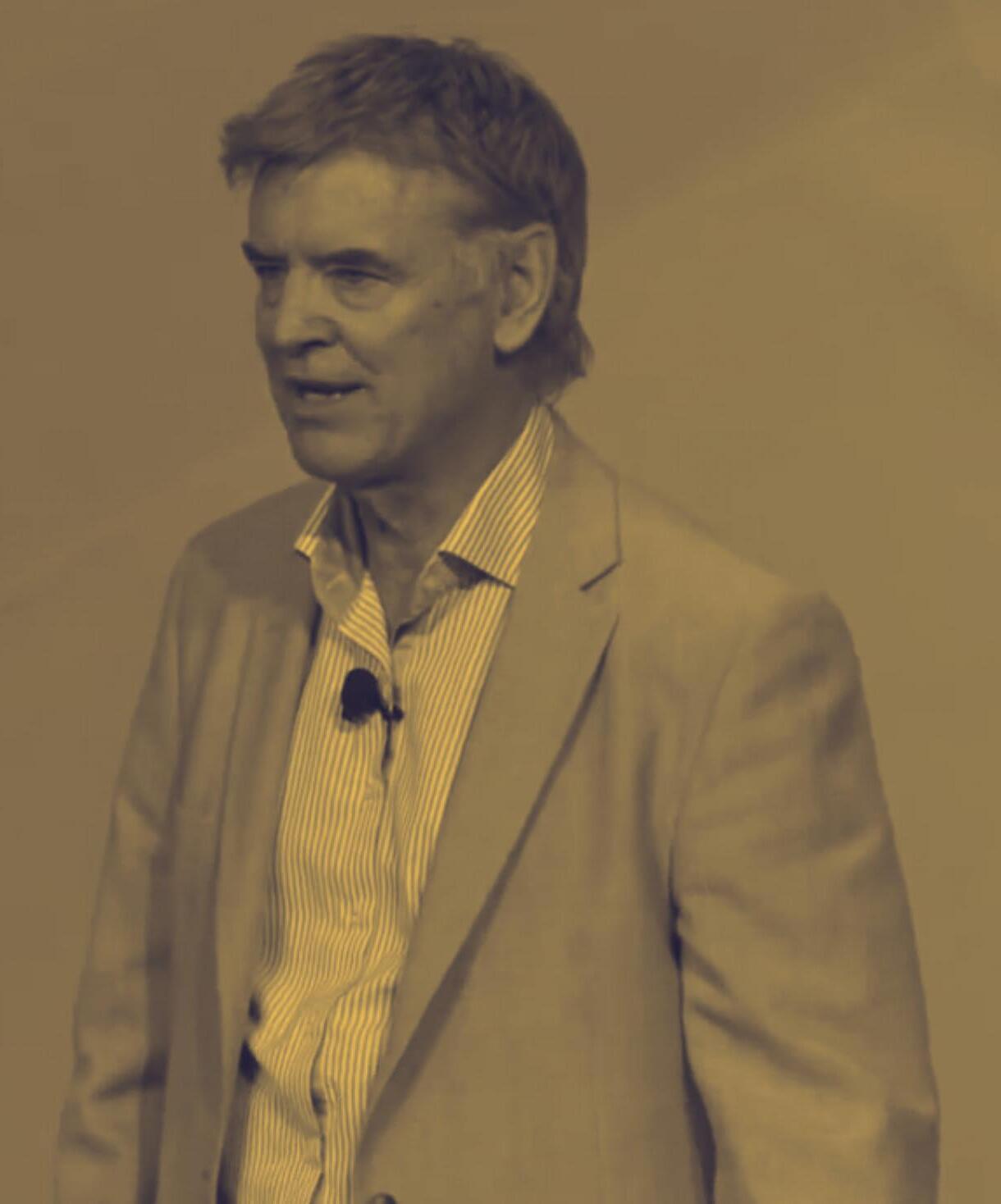

Guy Claxton (London, 1947) is a British cognitive scientist and educator. He holds degrees from Cambridge University and Oxford University. He garnered recognition by successfully rethinking schooling to better prepare all young people for a lifetime of learning with an inclusive perspective. His books include “What's the Point of School? Rediscovering the Heart of Education” (Oneworld Publications), and “The Future of Teaching: And the Myths That Hold It Back” (Routledge). His practical approach to the power of learning has influenced schools around the world.
Today we often hear the comment, “there is a lot of criticism of traditional education, but I look at many people who have gone through it and they haven't done so badly”. How would you respond to this statement?
We must be clear about what we mean by traditional education. It is content-heavy education in which everything is channelled through the teacher. Knowledge is assumed to be certain and unquestionable. Students' job is to learn it, memorise it and understand it to the point where they can use the information successfully under examination conditions. That is traditional education. Students who have an aptitude for this system for whatever reason get good marks. This
gives them access to elite universities and allows them to move into secure and well-paid professions. Many of them end up as professors, judges, neurosurgeons....
The problem with traditional education is that it works for a minority of young people who meet three characteristics: First of all, they have a certain intellectual inclination, they are capable of holding abstract discussions and they find debating
Traditional education is elitist in a particular way, selecting young people with certain characteristics
pleasurable. Secondly, they do not need much physical activity and do not mind spending time sitting. However, some people have to move to think. Some studies by my late friend Sir Ken Robinson talk a lot about the importance of bodily activity for different types of intelligence. Third, this kind of school is designed for people who want to wait for a long time before making decisions, while others want to be treated as adults by 13 or 14, want to be free to get a job, to be held responsible, to be paid for their work. They are ready to join the adult world. School is not too well suited for people who are neither intellectual nor sedentary and are impatient to leave childhood. Unfortunately, there are no alternatives for them in the
If we are interested in preparing all young people for life, we must ask ourselves what knowledge will be useful to them
traditional education system. And, if there are any, they are always treated as if they were inferior. If you are bright enough to learn Latin, English, science, maths... then you will do well. But if you are not bright enough, you have to study plumbing or carpentry, cooking or other useful things. My problem with traditional education is that it is elitist in a particular way. It selects young people who have certain characteristics and works well for a few, but not for all.
Knowledge has long been the main objective of formal education. Many of the criticisms of “progressive” or “innovative” views of education are about the huge setback entailed by not maintaining the primacy of knowledge. How do you think we should view knowledge today, and what role should it play in the schools of today and tomorrow? This ties in with my first answer. The role and nature of the knowledge taught in school essentially depends on clarity and consensus about the purpose of schooling. Is it about preparing students to be intellectuals? Is it about passing on the precious knowledge of the past? Or is it about equipping people to thrive across a wide range of different lifestyles, jobs and professions at a complicated, challenging and stressful time in human history? I am inclined to go with the third option. Education should be about learning how to think, how to learn, how to collaborate, how to converse with other people. It should be a basic
set of mental habits, dispositions or human skills that will be useful whether you are going to become a neurosurgeon or a shepherd. Education should be valuable to whatever you are going to be.
The role of knowledge depends on your underlying value system about education. If we are interested in preparing all young people for life, we have to ask ourselves what knowledge will be useful to them. My friend David Perkins at Harvard University has written a book in which he explores what he calls “lifeworthy” knowledge. What do young people need to know to be prepared for the future?
If we ask this question, the nature of the status of knowledge becomes as problematic as it does interesting. Should we teach psychology? Should we teach Freud? Should we teach banking? Should we teach how to detect fake news? Should we teach whether it is honest or dishonest for ChatGPT to write an essay for you? There are all sorts of things that we might consider valuable knowledge that may not be part of the traditional curriculum. I believe that trigonometry and algebra, the periodic table and some classic works of literature should have to fight harder to justify their place in a twenty-first-century curriculum.

It does not seem obvious to me that in English schools reading Charles Dickens is better preparation for life in the twenty-first century than reading J.K. Rowling. I don't know. Let's have that discussion. Let's talk about it. Are we teaching useful knowledge? Are we teaching the treasures of the past? They have
their place, but it's not necessarily a dominant place in the curriculum. Are we teaching young people knowledge that provides them with a good mental exercise to deal with something like solving simultaneous equations in mathematics? Is that a good “battery of exercises' to develop
I think trigonometry, the periodic table and some classical works of literature should have to fight harder to justify their place in the twenty-firstcentury curriculum
should it play in a kind of learning aimed at fostering the capacity for lifelong learning?




Knowledge is not stored as little bits of propositions in the brain. It is stored as changes in functional creativity





resilience, creativity, imagination... to develop useful dispositions for young people to live their lives?
Those in favour of knowledge have a responsibility to answer these questions: Why do we teach knowledge and how do we set priorities? Could accounting be taught as lifeworthy knowledge in school?
I am not against knowledge, but I think people who are very much in favour of it need to engage at a deeper and more serious level and ask themselves what kind of knowledge they want and for what purpose.
One of the most controversial issues in this regard is memory. What role does it play in knowledge acquisition? What role




We need to explore the concept of memory again. Since the time of Plato, people have sought to understand memory through different metaphors. Plato thought that memory was like a birdcage and knowledge like the birds inside it. The birds had to be caught and put in the cage. When you wanted knowledge, you had to find the right bird, go to the right compartment and make sure the bird was in the right place. What we mean by memory depends on the “hidden metaphor” used to explain it.
Since the 1960s, psychology has promoted an image of memory as a digital storehouse, like a library. A warehouse, a pantry where you store flowers, rice or different ingredients in your kitchen. It says that knowledge is things that come in through your eyes or your ears, and then somehow you have to find the right place on the shelf to store those things. In this sense, the purpose of knowledge is to find it in order to take it out and demonstrate it. This is the traditional view of education. And this brings us back to the question of knowledge. We are not only interested in filling our memory with interesting knowledge. As your question brings up, we are interested in a learning process that fosters the capacity for lifelong learning.
The conception of memory has changed a lot. Memory is not a storehouse. It's not a place where you store things. As far as we know, the only thing inside our heads is vast neural networks. Knowledge,
skill, expertise, values or interests can only be represented as changes in the functionality of those neural networks, and when we talk about declarative knowledge, things that we can assert, like “Madrid is the capital of Spain”, that is not in a special place in the brain but in some neural networks in the brain so, for example, when someone asks you the question, “What is the capital of Spain?”, you are directed to activate a small subnetwork in your brain that allows you to articulate the word “Madrid”. Thus, knowledge is not stored as little bits of propositions in the brain. It is stored as changes in functional creativity.
If we move to a more current metaphor for memory, as neural networks whose functionality continually changes, then it is much more compatible with the second part of your question aimed at fostering the capacity for lifelong learning. Part of the brain's functionality has to do with perseverance. When we encounter something we find difficult, confusing or challenging, our brain kicks into gear in a way that says: “I can figure this out. I'm going to use my intelligence and my thinking to see if I can figure it out on my own.” Memory contains values, attitudes, interests, beliefs and opinions. Memory doesn't only contain little bundles of knowledge or little parakeets flying around in Plato's birdcage. How we think about memory and knowledge depends on whether we have updated our understanding of how we register experience. As far as we know, the neural network model is
How we think about memory depends on our understanding of how we register experience
more fruitful, appropriate and positive for thinking about education than an outdated and discredited notion of memory like a computer.
You are a prominent expert on learning and the conditions for quality learning. Could you tell us a little bit about your “Building Learning Power” to help students become better learners in and out of school?
Let me first say that “Building Learning Power” was sort of an early version of my thinking about what turns young people into empowered learners. Now I now tend to talk more about the learning power approach, which is a broader term that includes my own version of building learning power but also includes the work of many other people around the planet in the US, Canada, South America, Australia, New Zealand, Singapore and Spain. How do we think about education in the twenty-first century?
I keep going back to the fundamental question: “What is the purpose of education?” I believe that education must equip all young people with the knowledge, skills, dispositions and habits of mind or character strengths, also called twenty-first century competencies. There are many different ways to talk about this. We have to equip young people with all of them to enable them to thrive in the world, whatever their career or path in life may be.
We are now very familiar with teaching knowledge and teaching skills. But until very recently we were not very explicit or sophisticated in thinking about how we taught. I believe that “teaching” is the wrong
word for the development of these characteristics or attitudes. The approach of the term “Learning Power” is like an emerging coalition of the thinking from different places around the globe. I must specifically mention the Harvard Graduate School of Education and in particular the work of Howard Gardner and David Perkins in developing a set of research projects called Project Zero, which has been a global leader in creating a sound scientific and philosophical basis for thinking about education more broadly, instead of viewing education as a narrow funnel that selects people to move on to the next stage of education.
In my country, England, there is still an obsession with the school leaving qualification that decides whether people go to Oxford, Cambridge or other universities. This is not good. It is an injustice to all young people for whom going to Oxford or Cambridge is neither possible nor appropriate in terms of their wishes, values, skills, talents... Education should not be built around this funnel to select people. There are all kinds of innovations underway around the world to build “learning power”, some of them much more radical than the “learning power” approach. More democratic and unstructured changes are needed, like the Khan Academy; more liberal and online innovations so students can set their own pace of learning and have more choice and autonomy to create their own curriculum.
These models provide conceptual evidence of other forms and other ways of educating. Many of them thrive on their own and depend on charismatic leadership.
Another level of thinking about the future of education, is to ask the question: “Can we introduce small tweaks or adjustments in schools?” We can continue to teach the traditional subjects; we don't have to do away with them. We can continue with traditional exams; we are not
going to get rid of them in the near future. But we can change the value system so that it no longer consists of retaining and reproducing knowledge for its own sake.
I just did some work with a colleague from New Zealand on what we called one of our favourite films: “The Magnificent Seven”, a good old cowboy movie. We are working with what we call the “magnificent seven learning dispositions', namely curiosity, perseverance or persistence, concentration (being able to focus your attention), imagination, careful critical thinking, communication and collaboration with others, and a quality mindset, what we call “crafting to your own satisfaction”, wanting your products to be the best possible quality. The goal is to not settle for, “Is this going to get me an A on the test, teacher?” but realising that there is a kind of pride or satisfaction that comes from having worked hard and overcome obstacles, researched, revised, polished... until you have produced something that is better than anything you dreamed you were capable of. The “ethic of craftsmanship”1 is something we should help to cultivate in all young people. People have slightly different lists of these attributes, and that's what I am working on right now.
The second question is: “So, how do we do it?” We now know a lot about how to shape the culture of a classroom. How to adjust the language, the layout of the furniture, the design of the activities, the forms
The purpose of education should be to equip all young people with the knowledge and skills to enable them to thrive
There is proof that students who are more resourceful or self-sufficient perform better on tests
of assessment, the types of wall decorations, conversations among students. There are still many aspects of the conventional classroom that we can modify to prevent students from becoming passive, submissive, shy and less adventurous, as happens all too often in the traditional classroom. Now the undercurrent leads students to be more independent, adventurous, curious, self-reliant, tolerant of mistakes and understanding of the fact that it often takes several not-so-good attempts to do something important well.
We are creating a different philosophy. The brilliant thing about this work is having a very clear understanding of what any teacher in any school in Spain, Paraguay, Singapore, Poland or anywhere else could do. We have to create that change in environment that makes us gradually build, value, encourage, observe and stimulate students to become more independent. As we build their learning power, they can pour that power into the traditional curricular
subjects if they want to and become better at passing exams.
There is proof that students who are more resilient, resourceful or self-sufficient perform better on tests. So, it is not a competition between the traditional and the progressive. The terrain we are now inhabiting is a sophisticated synthesis of these traditional objectives. If people want to learn trigonometry or the periodic table or the history of Spain, fine, but they will learn it better if they install a learning propellant in their own minds and if their teachers encourage them to continually improve and update those learning skills and attitudes. I believe that the future of twenty-first century education lies in cultivating these attributes, not some kind of intelligent machine. I'm not too concerned about artificial intelligence. I am much more concerned about the expansion of embodied intelligence, the intelligence embodied in young people. But perhaps history will prove me wrong. However, this is my commitment for the time being.
I'm not too concerned about artificial intelligence; I'm much more concerned about the expansion of embodied intelligence
Finally, could you describe the future of education as you see it, as well as the role of schools and families?
We have to evolve, not revolutionise, our way of conceiving education. But we need to be very clear about








Part of our job as school principals must be to try to reshape parents' expectations
where this evolution is headed and the small steps needed to effect out. We need a model for discerning the purpose of education, pedagogy model, a curriculum model, an assessment model and a school development and leadership model. They all need to mesh well together, like a set of well-oiled gears. There is a great deal of coherence between what we teach, how we teach it, how we assess it and how we implement it in our schools. All of this is driven by real clarity about how we should prepare all young people to thrive in the twenty-first century. Much of school leaders' responsibility is to work to help parents understand this change. Many parents still think that school is pretty much the way it was when they were going, and it's not. There is a new philosophy, a new psychology, a new pedagogy.
Part of our job as school principals must be to try by all means to reshape parents' expectations. We need to help parents understand that traditional education may be precisely what is harming their children's opportunities in life, especially if they do not belong to the group of intellectually sedentary children. So we need parents on our side.
Notes
1 “Ethic of craftsmanship”: the quality of working with passion, care and attention to detail.
MERCÈ GISBERT CERVERA
Continuing education for teachers in the twenty-first century. XXI p. 34
INTERVIEW WITH MIQUEL ÀNGEL PRATS
FERNÁNDEZ
Tackling the challenges of technology and artificial intelligence is essential p. 38
JOAN-ANTON SÁNCHEZ VALERO
Pre-service teacher training p. 44
Mercè Gisbert Cervera holds a PhD in Education and is professor of Educational Technology at the University Rovira i Virgili (URV), where she has been vice-dean of the FCEP, PhD at the Institute of Educational Sciences (ICE) and vice-rector of Teaching and ICT. She is the Principal Investigator of the ARGET research group. She is coordinator of the URV's interuniversity doctoral programme in Educational Technology. She is also a visiting professor at British Columbia University, Canada, and at the Graduate School of Education at the University of California at Berkeley.

There has been talk of the importance of lifelong learning in the twenty-first century for a long time now. From this perspective, how do you see today's teachers?
Yes, if we review the publications from the last three decades we find references to the topic of lifelong learning. The concept of continuous learning is applicable to everyone. The term “lifelong learning” also implies the teaching staff.
Practising teachers have a wide range of training opportunities so they can constant upgrade their skills, and while doing so they can develop in all types of subjects, methodologies and teaching strategies. Most of this training is free and voluntary. However, not all teachers have the
same perception of the need for continuous learning. Some teachers still decide that they do not need training, although there are fewer and fewer of them.
What do you think are the keys to sustainable teacher training to
For a plan to have an impact, a training plan should be developed with a middle-term vision geared towards improving the educational process
ensure the effectiveness of schools today?
As always, for a plan to be effective and have an impact on improving the educational system, it should be able to develop a training plan with a middle-term vision that is designed around the strategic aims of education and geared towards improving the educational process. Public policy strategies are often short-term in nature. There are training strategies that start and last one or two academic years. This short duration prevents them from having an impact on the school system in terms of improvement and quality assurance.
In education, there is a deeply rooted idea that each teacher
has his or her own style and should teach as he or she sees fit. Sometimes this makes it difficult for teachers to work as a team. What is your opinion of this trend and its effect on students' academic performance?
I believe that tackling the issue of academic performance from the perspective of teachers' “academic freedom” is oversimplifying the situation today and failing to have a holistic view of education or student learning outcomes.
The issue of academic performance, which is directly related to students' development process in terms of learning, should be analysed from a 360-degree perspective and bear in mind that students learn as much or more outside the school as inside. For this reason, teaching is increasingly complex because it actually has to consider not only strictly school-related academic development but also all the inputs received in society and the family (especially the latter).
Returning to your question, I believe that more and more schools are working in teams, because the methodological changes that have been incorporated in recent years and the use of digital technologies
It is impossible to design effective continuing teacher training if when one change has begun to be implemented another one comes along
Teaching is increasingly complex. It has consider not only academic but also social and emotional inputs
have led teaching teams to have to design and carry out projects together. Determining to what extent these new directions have affected students' academic performance without evidence is very difficult, and I would not venture to say that there is a direct relationship between the two.
Sometimes we get the feeling that teachers do a lot of training, but it rarely has the effect of changing educational paradigms or the way they teach and learn in their classrooms. Why do you think this happens?
Yes, I agree that teachers are getting more and more training. The fact that nothing changes is perhaps more a vision derived from the current need for everything to change almost in real time than from the fact that teaching does not have an impact on the reality of education in terms of change and innovation.
Let me illustrate this with an example. Since the 1970 Education Act, there has been no other general law that has lasted long enough (about 17 years) to be able to be deployed in its entirety. Why is that? It is impossible
to design
effective continuing teacher training if when one change has begun to be implemented another one comes along. The effect this generates is disorientation. In addition, no evidence of the reality of education is collected to see what has changed, if anything, and it is never borne in mind that education is a kind of long-distance race, so we will never know how it has developed if we don't have the capacity to “shield” public policies in education from changes in legislatures and partisan ideologies.
What is meant by effective pedagogical leadership at a school? Why is it necessary? How can it be achieved?
When we talk about leadership, we mean the ability to design and develop projects of any kind and to integrate all the related stakeholders in order to achieve and implement them successfully.
If we apply this to a school, we can say that effective pedagogical leadership is exercised by the administrative team when it is able to design an educational project for the school that is innovative and sustainable and involves the entire educational community with a 360-degree perspective.
Good pedagogical leadership is necessary to ensure the efficiency and effectiveness of the educational process in terms of learning outcomes, school climate, innovation and integration of all responsible stakeholders.
How do you think teaching teams should work and interact with each other? Today there is a lot of talk about networking and sharing experiences, and about Edu Labs. To what extent can this practice improve teaching?
All collaborative practices in themselves are a huge contribution. Education is largely
Effective leadership is exercised by the administrative team when it is able to design an innovative and sustainable educational project
a communicative and social act. For this reason alone, teamwork is more geared to what education should be than individual work. In fact, the emergence of the Internet in the 1990s and the recent health
emergency caused by COVID-19 are clear examples. Communities, both analogue and digital, have enabled us to guarantee the development of education despite the difficulties. In both cases, networking has been a clear example of the added value of working as a group rather than individually.
Likewise, the experiences of Edu Labs, Maker spaces and all the programmes that are currently being promoted by the Department of Education, are a clear example of how the whole is more than just the sum of its parts and extends the impact of changes and innovations.
is
In
world full of machines, the role of teachers will be even more focused on providing students with personalised supportby Ana Moreno Salvo
The advancement of technology and artificial intelligence is rapidly transforming the world and the way we live. How should the education sector view or interpret this transformation?
In the first place, we have to think about the major need we teachers and educators have to become literate in everything related to data, to quantify them, value them and know exactly that we are working with machines and that behind them there
is data.
Secondly, we are faced with the huge challenge of revitalising and resignifying in-person activities. We have know what we should do in class and in the presence of these powerful technological tools. We have to ask ourselves why it is worthwhile for us to learn about and take advantage of them.
The third challenge is related to the fact that these “smart machines' or “smart technology tools' may eventually allow us to automate a
We have to question all the technology we use, we should not believe everything we see and we should ask about what media we are consuming when we use technology
whole range of tasks. We have already experienced them making our lives a little “easier”; they can help us at work, too, so we can devote ourselves to really enhancing our student support. We are facing a very interesting challenge: to ask these virtual butlers or assistants we will end up having to do jobs. This is all moving very quickly. I think that within a year we will start to have our own little artificial intelligence virtual butlers. This will make it easier for us to devote much more time to individualised student attention and therefore for teaching to be much more personalised.
The fourth challenge has much to do with the ethical aspect or critical thinking. We have to question all the technology we use, we should not believe everything we see and we
Àngel Prats Fernández is a teacher, educational psychologist and PhD in Education from the Faculty of Psychology, Education and Sport Sciences at Ramón Llull University (URL). He is the coordinator of the Master's in Educational Leadership and Innovation, a professor of Educational Technology and the researcher in charge of the eduTIC line of the PSiTIC research group (Pedagogy, Society, Innovation and ICT). In 2020 he was awarded the 30th Joan Profitós Pedagogical Essay Award for his book “10 Lliçons per a un Ús Ètic, Saludable i Responsable de les Tecnologies Digitals”.

We have to be able to be mentally flexible and have huge doses of emotional reserve to be able to learn, unlearn and relearn
should ask about what media we are consuming when we use technology. We need to become questioners of everything around us.
What do you think are the priority challenges that teachers are facing in their ongoing professional training to meet the educational needs of the digital era?
There is an aspect that has a lot to do with the bureaucratic side of filling out paperwork, applications, appeals, documentation and all that. If these tools can help us do that, it would be great.
Another challenge has to do with the emotional dimension. We teachers need to prepare ourselves emotionally for everything that lies ahead. We have to be able to be mentally flexible and have huge doses of emotional reserve to be able to learn, unlearn and relearn. Therefore, we have to be very flexible. We will have to start working on issues related to with this personal support or being tutors. And that is a very interesting task. Some teachers say, “don't bother me with that; I'm a maths teacher”, because I don't know if maths will be better explained by artificial intelligence someday. Our task will probably involve support, monitoring, individualised attention to a series of students whom we will have to assist in their growth and character. In the end, we will have “to grow by making grow” in Xavier Marcet's words.
The priority challenges have to do with soft skills: decision-making, teamwork and problem-solving. How can we help our students to have or gradually acquire the 6Cs that Michael Fullan often talks about: communication, collaboration, creativity, critical thinking and especially civility and citizenship,
and compassion and character? Therefore, the aim is to help these students to become self-leaders, selfregulators and self-knowledgeable. We have to be able to work with them, help them know how to interpret what is going on around them or in a given situation. Artificial intelligence will not be able to do that. I often tell students: “Hold on a minute, stop. What are you looking at? What is happening right now? How is that person feeling? What did this other one just say? Did you hear what you are saying? How should we proceed from here?” A machine won't be able to do that, and the big challenge is to know how to take advantage of this. Coming to class should be worthwhile to work on these questions and learn how to interpret the environment, oneself and others... I am not saying that knowledge is not important, but we have to find this balance. In the future, we will not have so many master classes; instead, we will have to find that balance of making them work more as a team and being able to find other strategies.
How can digital technology help teachers to improve their day-today work?
Technology harbours huge possibilities. Many of these emerging tools that have an artificial intelligence component are already beginning to appear. We even see how they can help us in our teaching, like writing exams, exercises or certain teaching materials. There is a series of resources where technology can help us a lot, such as planning and
designing our teaching action. It will allow us to work more collaboratively with other teachers and schools to create projects together.
We will have to be very creative. Ultimately, technology only puts a mirror in front of us so we are able to rethink our role in a world full of machines.
There are many teacher training models. What are the key features of effective teacher training in digital competency?
Digital competency is an issue that has a lot to do with what I often call “disconnecting to connect”, having attitudes. And when I say attitudes, I mean that we are capable of putting the brakes on it, setting limits and knowing how to regulate it.
What key features are needed for good digital competency training? The first is that it should not be completely exceptional but instead an everyday, invisible thing. We should not be afraid of it; it should become just another task that we can hybridise. Also, let's meet face-to-face; we can use personal encounters when needed.
There are different models, which means that we are probably talking about a kind of session that deals solely and exclusively with technological issues. It would be healthier, or at least complementary, for technology to be present in every single subject or project we are working on.
I would therefore advocate complementarity. First, it can be a subject of study, meaning “we study the technology itself” in terms of computational thinking or robotics. This is how we come to understand how devices work and how we learn about the technology itself. The second is learning with technology. It
Technology will allow us to work more collaboratively with other teachers and schools to create projects together

cuts across the curriculum. That is, we are doing mathematics and if needed we use a calculator, GeoGebra or any other technological tool. But, above all, making students think is what matters the most.
It is one thing to “learn about” something and another to “learn with” it. And let's not forget the more attitudinal dimension; that is, everything related to critical thinking and digital well-being: how we are using it, how many hours we are connected and if we are able to put it down. It is important to work on these aspects when teaching our students, to explore how we interact and
It would be useful and healthier for technology to be present in every single subject or project we are working on
coexist with technology. Nowadays, many of our interactions are not only personal but also technological. Therefore, we will have to spend some time reflecting on this.
Although digital devices are part of our everyday lives, there is a great deal controversy around the role they should play in schools. As an expert and author of the book “Viure en Digital” (Living Digitally),
what would you say to teachers, school principals and families in this regard?
At school, technology has to serve the school's educational project. We have to be clear about where we want to go. If we are, it will be easy to know where technology fits and what we want to take advantage of. The problem is that we often don't know what we want, or we want so many things that we get mixed up and end up muddling these issues a bit.































































Technology has to serve the school's educational project. This criterion should guide reflection on the place it should occupy in each educational context
Secondly, I think there is an aspect that has to do with involving the students in all of this. One role that the school should play is giving students a say about how they experience it and how they see it. Any decision must be agreed upon with the students themselves. Let's bring them in; I think their voices are important.
Third, we have to consider families. There has to be a very close dialogue between families and the school, as well as coherence. Faced with the challenges of technology, families are often very confused and bewildered. We need a great deal of understanding here. If the school accepts cell phones, the families and the students themselves have to agree to this. Therefore, we have to decide how they are used.
Finally, great leadership is necessary. There must be a digital project with a digital strategy for the school, and that document should not only talk about all these essentially instrumental issues requested by the administration, but also has them as its own character. For example, “At this school, technology is viewed this way, and we view it this way to facilitate and enhance these issues. Therefore, this translates into suchand-such.” This is an ideology, a way of understanding the use of technology which will ultimately be transferred to many other issues. I think it is important to keep this in mind. In this way, we lead, forecast, anticipate and support families, as well as teachers and students.
What is your opinion about computational thinking and artificial intelligence as curricular content? What do you think is the
best way to integrate them into the classroom?
It is very interesting that it's possible to work in schools from a STEAM perspective, in which computational thinking and artificial intelligence are fully integrated into projects related to science, mathematics, engineering or art. Using technology becomes completely invisible: we talk about space, the moon, gravity in a cross-cutting way in projects where technology is necessary.
It's really helpful if children and teenagers understand what it means to work with machines and if they understand their language. They have to understand that there is no superior entity behind artificial intelligence but rather an algorithm, pure statistics or very sophisticated mathematics. We can mistakenly start to anthropomorphise these machines. We have to demystify some issues. This is how we come to understand everything from how a traffic light works to how most home automation works. It's great because it awakens students' curiosity to learn and especially to know.

He holds a PhD in Education and is director of the Department of Didactics and Educational Organisation at the University of Barcelona (UB). He coordinated the programme “Propuesta interuniversitaria de formación inicial de maestros en tecnologías digitales'. He has served as president of the Asociación Espiral, Educación y Tecnología. He is the author of more than 60 scholarly publications, the most cited article being “Fomentando la competencia digital docente en la universidad: Percepción de estudiantes y docentes', published in the “Revista de Investigación Educativa”.
The other day I was reading an advertisement for a university offering a two-year teaching degree for undergraduates. From the standpoint of an expert in preservice training, what does this proposal suggest to you?
On this point I will be categorical: I believe that two years are absolutely insufficient for pre-service teacher training, even if they have degrees in other fields. Another issue is the training of secondary school teachers, where it is best if they receive simultaneous training in pedagogy and their field of specialisation, although doing it sequentially is also fine. In this vein, I agreed with the document prepared in 2017 within of the Programme for Improvement and Innovation in Teacher Education
(DOCSMIF4) in which a 3+1+1+1 model was proposed; that is, 5 years of pre-service training with a total of 900 ECTS: a three-year Bachelor's in Education, the first with core courses and the next two with a specialisation: early childhood, primary and secondary; a post-graduate specialisation degree in Education; and a master's degree consisting of a one-year resident internship. In this proposal, connections were designed that would allow students to shift between stages as long as they were trained in the 3+1+1+1 model. Also, only for secondary education, noneducation graduates were allowed in the Postgraduate Education Programme, provided that they had taken 30 ECTS of complementary training during or after their degree. For baccalaureate teachers, this
additional training would not be necessary.
For some time now, education has been plunged in a crisis regarding the professional competencies that a good teacher should have. Could you specify the most important ones for now and for the future? Joan Corbalan says that training people was a priority for the Republic. Along these lines, I believe that a good teacher must be able to: a) train citizens capable of decoding
The most important skills for teachers: digital, diversity and classroom management

and re-signifying information and transforming it into knowledge, and b) develop student-centred ways of teaching and learning based on the collaborative and shared construction of knowledge.
At a specific level, some of the most important competencies for teachers include those related to emotions, digital teaching competency, diversity and classroom management. But in a few years I have no doubt that we will be talking about others.
Today there are many different ideas about educational quality. There is a lot of talk about evidence-based learning, as well as the importance of UDL (Universal Design for Learning), active methodologies, the “flipped
classroom”, gamification, projectbased learning, etc. How can all this be combined in pre-service training? What are the essential lessons in this regard? Sometimes there is a kind of fixation on one methodology or another. I believe that what is important is not what methodology we train future teachers in or what methodology the teacher should use. What is essential is to reflect on the most appropriate methodologies to meet the challenges we are facing, both for each educational context or situation and in relation to the overall challenges we face as educators, which I raised in the second question.
In the case of educational technologies, which is my field, no tools are better than others. There are ways of using them that only
replace the analogue ones, add little or no value to the technology and do not generate methodological changes, along with other ways that allow for a significant redesign of learning activities or a methodological change (SAMR). We need to focus our training and educational practice on these latter ways of using technology, not on the tools themselves.
Many people say that the key to education today is lifelong learning. What do you think the pre-service training of a teacher who has to teach their students that learning never ends should be like?
This is a crucial question. When I was the graduation sponsor of a graduating class of teachers, I told them that if I had to choose one wish
for their future, I would only want them to think about what it means to teach and learn at each stage in their careers, because their answer at each one will probably be different than their answer today. It involves keeping abreast of trends and changes in education, among other things. That's difficult to do when teachers have little time and space for reflection on their practice.
In the field of digital technologies, students are very focused on knowing and mastering all the existing tools, when most of them will be obsolete or no longer exist a few years into their teaching career. My task is to make them competent in acquiring more transversal skills that allow them to interact with emerging technologies and use them to modify and redefine the educational processes, as I mentioned in the third question.
When teachers land in a school after university training, do you think they are prepared to face a classroom? If not, what could schools do to support them as they get started?
In the second question, I said that two of the most important specific competencies for future teachers were attention to diversity and classroom management. One way to address these issues would be to establish the figure of the university professor working in education, which today only exists in the field of medicine. In this way, we would have teachers who could improve the connections between the university
We must be competent in learning about emerging educational technology and in redefining educational processes
and schools, especially with future teachers' internships.
Currently, the figure of associate professor already exists. It was created so that professionals in the field can contribute to university education. But it is particularly difficult for teachers to combine these two functions due scheduling conflicts. The creation of this figure would make it possible for current teachers who have the appropriate training to also become per-service teacher trainers at the university.
Lately, there has been a lot of talk about the importance of familyschool collaboration in high quality education. Some schools have begun to set up family-teacher meetings to provide personalised follow-up for each student and optimise teamwork between both parties. Do you think that teachers are prepared to provide this type of support? What training would be the most appropriate from your standpoint?
Family-teacher meetings to personally monitor each student and work together are nothing new and are quite common, but it's true that the family-school relationship is increasingly complex, especially because we are immersed in a changing and diverse society. This is why it is necessary to deepen future teachers' training in this, which right now is quite residual in their training.
Leaving aside theoretical-reflective training, which is always necessary in any kind of pre-service teacher training, it could be approached through simulation, which has long been used in medical training. This would consist of teachers, students or actors hired for the part simulating teacher-family meetings where they would have to deal with situations they may encounter when they have to follow up and support the students' processes with their families. There are experiments underway with the use of simulation
Simulation is useful in the practical training of teaching skills
in education, but they are still very incipient.
Anything else you would like to add?
I would like to make two brief final comments: first, pre-service teacher training, unlike secondary teacher training, must be focused solely on pedagogical aspects, and linguistic, mathematical, scientific and other competencies cannot be addressed in the degree but should be a prerequisite for admission.
The second is that it is necessary to further interdisciplinarity and move away from subject-based compartmentalisation. The latest draft of the Ministry of Universities regarding teaching degrees, dated 2023 and currently stalled, includes an interdisciplinary project of the subjects of each semester to be carried out by the entire teaching staff. This initiative is still insufficient, but it is an interesting and feasible starting point.






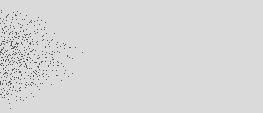
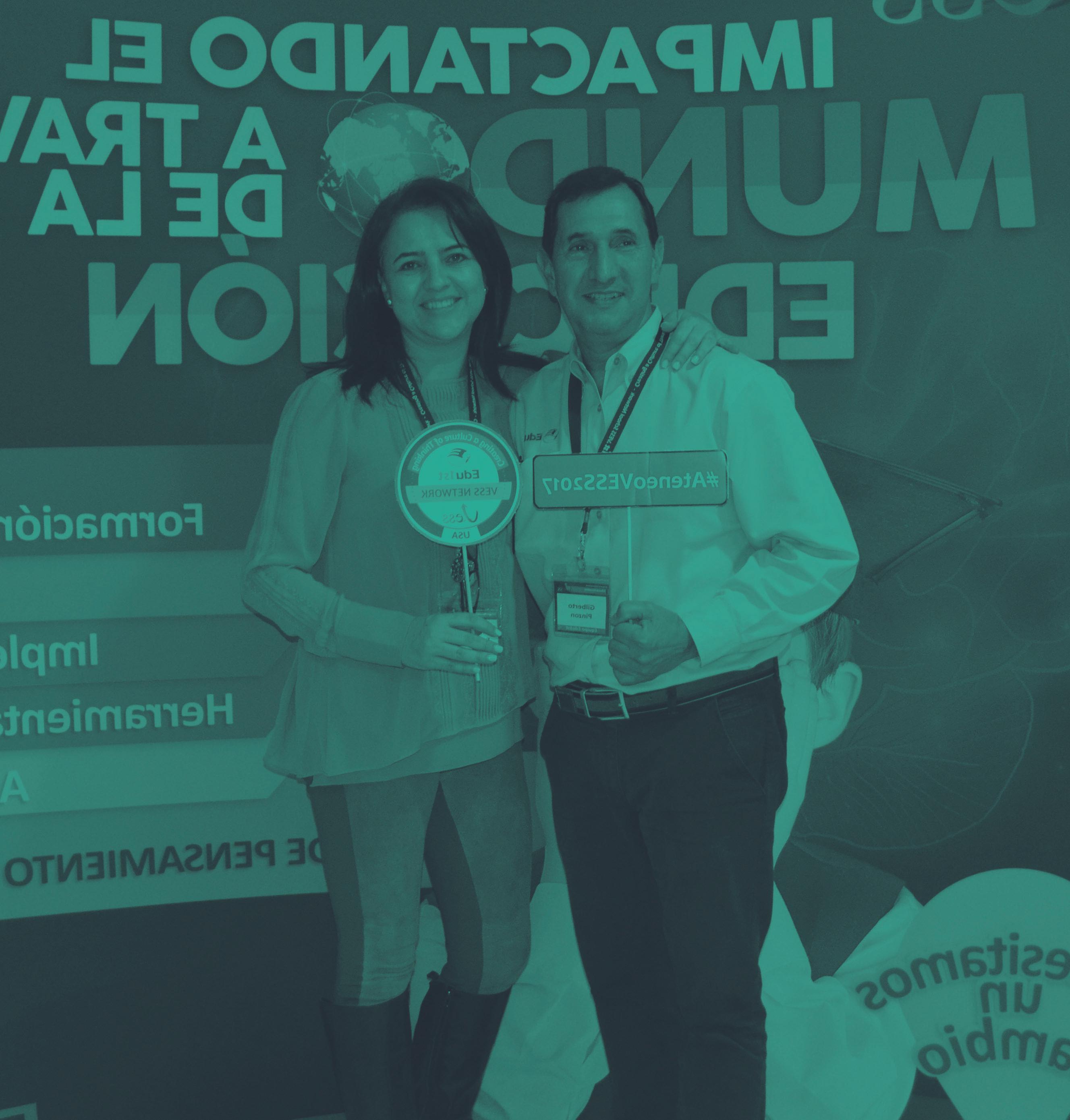
Ana María Fernández is founder and president of Education First (Edu1st). She studied Early Childhood Education at the University of San Buenaventura (USB) in Bogota. She holds a master's degree in International Educational Administration from The College of New Jersey (TCNJ), United States. She is the founder of eight schools in Colombia and the USA. She has more than 25 years of experience in the field of education. Since 2020, she has been a lecturer in the postgraduate and Master's degree programme in neuroeducation at the University of Barcelona (UB). She is also the author of the VESS (Vida Equilibrada con Sentido y Sabiduría) educational model, which has been implemented internationally in more than 120 schools, and is an international consultant for schools.
Gilberto Pinzón is the co-founder of Education First (Edu1st), as well as a member of the monitoring committee and professor in the Neuroeducation Chair at the University of Barcelona (UB). He is also a university professor. He holds a Master of Business Administration MBA from Atlantic International University in Florida, USA. He participates in developing educational programmes and methodologies used by schools in the USA, Latin America and Canada to promote thinking skills, habits and mental dispositions.
Some time ago, you created the VESS model of institutional transformation. What made you do it? What are the hallmarks of the educational model you are proposing?
Ana María Fernández (AMF): The VESS model was created 35 years ago out of a personal, or shall we say family, need. When our children were born, we suddenly needed to understand what was happening in education. We began to realise that there was little educational innovation and that schools were still offering the same education that we, our parents and grandparents had received. We became quite concerned and began to realise that education needed to transform its outlook.
It became our life mission to
understand that the transformation of education must be institutional and has four dimensions: it should be transformed from the institution and its educational policies; from the paradigms of teachers who teach according to how they see the student in the future and their own professional responsibility; from the students themselves, how they empower themselves and grow; and from the vantage point of education as a social transformer that therefore works with families, in a community.
It should be transformed from the institution and from the paradigms of teachers and students
This is the origin of the VESS model (Vida Equilibrada con Sentido y Sabiduría, or Balanced Life with Meaning and Wisdom), which seeks to understand why everything we do, all the decisions we make, are based on our emotions. This is true of how we think, how we work and how we make decisions in different situations in life. VESS is a cutting-edge model: it is based on the neuroscience of learning. It is an eclectic model because we do not believe that there is one absolute truth. There are many fascinating approaches and lots of research on learning and didactics, pedagogy, psychology and leadership that are important for this educational transformation.
It is a strategic and systematic model because we believe that the student is a learner who undergoes
The VESS model is cutting-edge, eclectic, strategic, sustainable and human-centred
a process and receives support, just like the adult. To change the adult's paradigms, to make the adult learn, we have to help them to become a learner. We do not want a school to depend on just a few people who know but to achieve a change in the institution's internal engine.
This model is human-centred, not curriculum-centred. To have balance, we have to learn certain subjects, we have to read about certain topics, we have to understand our context, we have to have a purpose in life, and we have understand the why and live with wise actions. We are absolutely convinced that this starts in childhood and is experienced throughout the
school years.
In short, the VESS model is cuttingedge, eclectic, strategic, sustainable and human-centred.
The education sector has been going through a critical time of transformation for years. How do you think that is affecting educational institutions? What about the teaching profession?
Gilberto Pinzón (GP): Our educational model is more a process of questioning than transformation. It is a more reflective and analytical process. Also, I think the word “transformation” is rather hackneyed. Many people believe that educational innovation is about introducing iPads into the classroom, while its core essence remains exactly the same.
In some places there are offshoots that are trying to effect this educational transformation. Technology is coming at us so fast
and in such a significant way that there seems to be no way to oppose this current of transformation.
Education is still a bit outdated, disconnected from reality. The world is going one way and schools are still teaching the way they did 30, 40 or 50 years ago.
I think the teaching profession needs to look outward a bit more. We tend to focus on the world inside our four walls and don't realise what is happening outside.
AMF: The VESS model offers a model of change, a process that consists of training leaders and teachers that allows room for implementation and support. The VESS model has had a
The model is centred on humans who learn, have a purpose in life and live wisely

I am a teacher, I have a real concern each person and I collaborate in the construction of society and in the development of the individual
positive impact because it manages to generate a pace of change. We become learners and give ourselves permission to reflect in order to learn and to open the door for colleagues to visit us in our classroom. In the VESS model, we work a lot on opening up. There are schools that have had training in certain subjects and others in others; there are schools that have teachers who have made a lot of progress and transformed themselves, while others are still very much mired in traditional education.
It is a respectful model that transforms people and paradigms. We know that it has prompted changes in the lives of many teachers that go beyond the educational dimension. This model affects both the institution and the individual, plus it builds a culture of VESS thinking.
One of the things we find with educators with the model is that it professionalises their work so that they begin to bring more meaning and purpose to what they do. I am not just a math teacher, but I have a real concern for this person: I collaborate in the construction of society and in the development of an individual. And I do this in a way that will have repercussions for the rest of their life. It is an awareness of the value of our role as educators.
In your experience supporting so many institutions on their path of transformation, what do you think are the keys to progressively moving forward somewhat
successfully?
GP: The first thing is to have a purpose and a clear sense of what you want to do. In its processes and challenges, transformation requires enormous clarity of purpose: why I want to transform myself and the end goal of my transformation.
The first key is purpose: the motive and the “end goal”. The second has to do with the question of leadership. We see institutions that are navigating a positive process and others that are having major difficulties implementing the transformation process. The big difference is unquestionably the leadership. When there is leadership, the direction, commitment and meaning are clear. The leader is able to transmit it and to infect those around them, to motivate and support them.
The last fundamental factor is that the educational community being exposed to this process has to understand that it is a process, not an event. When the “end goal” and “why” are understood, the transformation process is properly structured and the team is involved, with the understanding that this is a mediumto long-term undertaking.
What does the teacher training in your training process consist of? In your experience, what is the key to achieving the lifelong learning motivation and attitude in teachers?
AMF: Each individual has different entryways to motivation. The first thing is to understand the principle of differentiation, human variability. We can't expect the whole team to be motivated simply because we brought in a motivator. This is a process in which there are different types of resistance, so we have to discover each person's entryway.
Our trainings have a practical component, as well as a lot of reflection. We believe it is very important for educators to be able to live the experience that
they are going to transmit to their students. For this reason, we create practical and reflective workshops with different levels of difficulty. We provide training in visible thinking routines using Harvard University's Project Zero approach, which is a great foundation for us. We talk about concept mapping, habits of mind, the culture of thought, strategic planning and assessment, character building and emotional education, as well as mental health. We were taught to talk a lot about “emotional education”, but that is not enough, given that we educators have to understand mental health and character formation from the theory of mind, in short, from systems thinking.
But it doesn't happen all at once. Our trainings are strategically coordinated in such a way that teachers can experience a process and not feel overwhelmed. I believe that we educators are now overwhelmed with a bombardment of theories, approaches and models. Part of what we are trying to do is to present it in a gradual, comprehensive way.
Our training programmes are strengthened by supporting the leaders. The leader is fundamental in the transformation; it is essential to work with them in this training and support.
Nowadays, there is a lot of talk about educational coaching, coteaching, pedagogical reflection of the teaching team, etc. What do you consider to be the keys to continuous improvement for teachers? What techniques,
The difference is the leadership When there is leadership, the direction, commitment and meaning are clear
methods or strategies do you think are the most effective?
GP: This is somewhat complex because we are going to deconstruct the model that has been implemented for centuries, which is deeply entrenched in each of us. Now we have to rethink everything that happens in the classroom. We have to create essential support strategies, such as coaching. This can be done virtually, with well-organised and wellplanned sessions where teachers can chat, ask questions and help in the transformation process.
Face-to-face coaching helps a lot, even if it initially generates stress on the part of the teacher and the institution. Everyone knows that in the end it is for their own benefit. We want to promote everything from a positive point of view, from the perspective of people celebrating the transformation process, despite its difficulties, and introducing mistakes as an inherent part of the learning process.
Connecting it to the other question, about how we get them motivated, it is about generating a reflection on why I am doing what I am doing, why I chose this profession. The goal is not just to teach multiplication tables or explaining the French Revolution, but to help students to better understand the world and themselves. So, one of the objectives is to redefine the teaching career and the teaching profession. This is often motivating, because one of the elements of motivation is having a purpose in life, and mine is to help transform and impact lives. It is a motivating element that has to be kept alive.
AMF: I would like to add two things that I think are fundamental to
We want to introduce mistakes as an inherent part of the learning process
the VESS model's approach to this transformation. One is that we are intrinsically motivated when we find purpose in what we do. We are also intrinsically motivated when we see that we are able to do it. If you set a goal that is too high, it will be difficult to motivate someone. If, on the other hand, we advance step by step and see the results while being allowed to reflect and see how this effort is really generating a change, then we feel satisfied. The awareness that we can do it is fundamental to motivation. It is extremely important.
The second factor I wanted to add is related to the issue of coaching. I think there is a lot of talk about coaching today. In our view, a mentor is someone who sometimes gives you answers, but at other times they may simply guide you in a reflection and help you build it. In addition, we believe in “co-coaching”, if we can call it that. That is, a space for reflection among educators. Our style of coaching is with groups, as opposed to the old truism that it should be private and one-on-one. If you look at John Hattie's research, you will see that one of the indispensable factors in the success of educational transformation is collaborative work among teachers. So, part of the support we promote is conversations among teaching teams who reflect together, help each other and do not become dependent on the outside person acting as a “coach”.
The idea is that when we are no longer there, the autonomy that has been developed will allow the teams to continue looking at each other, reflecting together and “co-coaching” each other. That's why we believe it is essential for each institution to have its own trainers, and we offer them training.
One important dimension of academic achievement and the positive impact of education on children and youth is the family. What is the role of parents in the
One of the objectives is to redefine the teaching profession to help transform and impact lives
GP: They are very important, if not all-important. As I said before, we are attached to an old model that has marked us, which we want to change and, in fact, are already changing. Soon parents see that their children are talking, working and developing differently. This means that parents have to be fully involved; they have to be participants. Within the VESS model there are specific strategies and practices to involve parents in the process so that they understand what we are doing, that it is a culture of thinking, that these are habits of mind and that you don't memorise but understand things, and so on. Within a culture, all the stakeholders that are part of that social group have to be included, and parents are an important and essential part of it. In the VESS model, children present their progress and results. In the past, teachers would meet with families and tell what or how the child was doing. Now the child is the one who meets their parents at school in a special setting. They are called “student-led conferences', and the children are the ones who tell how they are doing.
AMF: The model proposes spaces for lectures, spaces for reflection with families, units of inquiry or work projects to be done by students who have to figure out how to impact the community (be it family, neighbourhood or outside community). We want the school not to be a strange laboratory where people don't know what's going on outside, but a safe place where they learn how to discover the world around them, which is a universal
community.
We founded this model, we are passionate about it and we have seen results. But beyond our perspective, there are thousands of educators who have experienced the transformation model with VESS, and it is a pleasure to see educators
who were just getting by on inertia rediscover the passion and vocation that led them to study education. This is a huge achievement. The conversation with families is different when educators experience the transformation process. There is a greater respect for the teaching profession because you are no longer the one who delivers information that students can look up on the Internet but a trainer of people who understands how the brain works. For us, it is essential to understand how it works in order to professionalise the teaching profession. As an educator, I am proud to say that this is already
happening in many institutions. It is more complex in some than in others, but nonetheless it is always achieved. This is my last message: people who are hesitating should be encouraged, they should be encouraged to transform themselves. Education is much better when you transform yourself.





























































INTERVIEW WITH DOUG LEMOV
Excellent teachers create their own classroom culture p. 56
DAVID BERNAL LÓPEZ
TEAL is not just a colour p. 64
FRANCESC BALAGUÉ PUXAN
Cooking Tomorrow: Cooking the teacher training of the future p. 70




Doug Lemov (1967) holds a BA in English Philology from Hamilton College, an MA in English Philology from Indiana University and an MBA from Harvard Business School. He was an English teacher and school principal before founding Uncommon Schools, an institution that runs 53 public schools in the northeastern United States. The US Secretary of Education, Arne Duncan, awarded Uncommon Schools' North Star Academy recognition as an exemplary school. Lemov is currently a trainer and lecturer and a member of the TLAC team, which trains the best teachers worldwide. He is the author of the international bestsellers “Teach Like a Champion”, “Reading Reconsidered” and “Reconnect”, all published by Jossey-Bass Inc.
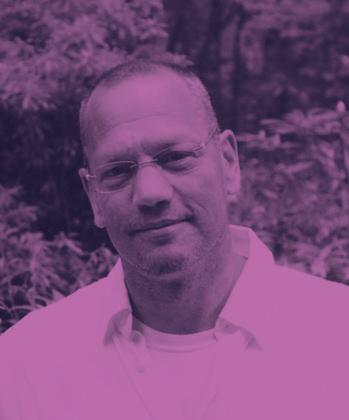
How do you explain the huge impact of “Teach Like a Champion”1 (TLAC) on teacher training?
What do you believe are the main factors for success?
I think the first thing is vocabulary, which is always underestimated in learning environments. Vocabulary is very important. Teachers are first and foremost decision-makers. When you teach a maths or a Spanish class, you make dozens of decisions along the way. And the first thing you need if you want to optimise them is to be able to talk about them. Therefore, having a shared vocabulary to talk about the minor decisions we make throughout the day is very important so teachers can solve problems and be responsible for decision-making.
I think one of the important things about “Teach Like a Champion” is that it names things, often things that teachers already knew and did.
The second is that when we have a name for things, we can talk about them and dig deeper and study all their details. That's why I think names are important. And because they help people break things down. “Chunking2 is a concept from cognitive science which states that when we have a name for something, we are able to see a series of separate incidents or events as one thing. That helps us perceive things faster and make better decisions.
The third is that in the book I tried to honour teachers by studying them and examining what they actually do. Much of the advice given
to teachers comes from outside teaching. They say: “Your class should be democratic”. Should my class be democratic? What does that mean? Does that mean I have to be democratic when John gets the class's attention by disrupting everyone's learning? Do we have to vote? No! I don't think there is a performance gap that some teacher somewhere hasn't found a solution to. I truly believe in honouring teachers by examining the solutions they have found and studying them on video and watching them over and over again. Video is an incredibly powerful tool for studying complex environments.
No one wants to stand in front of a classroom and yell at kids when things aren't going well. No
Video is an incredibly powerful tool for studying complex environments
one wants to end the day feeling that they have failed the children because they haven't created an environment in which they could learn optimally. Teachers leave the profession because they cannot manage a classroom the way they dream about doing. I think the reason so many people focus on behaviour management chapters is because there is a big gap, and teachers suffer from it. Good people who want the best for children strive to get the results they seek.
Part of this is understanding how to build a vibrant culture, but there is a lack of guidance in this. I think this is probably one reason why “Teach Like a Champion” has been helpful to teachers, because it has filled this gap with insights from real teachers. It is ironic that people obsess over these chapters, which are so necessary and scarce.
In your experience, is it possible to train new teachers to succeed in any classroom, whether it is disruptive, economically, culturally or racially diverse, single-sex or coeducational? What are the key aspects of your method?
I believe that each teacher is unique and different. But are there skills that make you a good “teacher”? Of course there are. What does it say about our own work that we think we can teach people to be surgeons and engineers and to build bridges over rivers, but we don't think we can teach them to run classrooms? Of course we can if we take it seriously. We have a dim view of education if we think that we cannot train professionals to teach. What are the key parts?
First, there is a need for a research-based model of success,
both practical research, what teachers actually do, and research on learning, that is, cognitive science. I think the starting point is understanding how people learn. Once you have this, you can start to build professional development for teachers. In the United States, many teachers come to professional development with their arms crossed, because they think: “How can I get through this so I can be left alone to do what I want?” This is a profoundly sad statement.
Professional development must solve teachers' real problems. It has to be committed to real classroom issues. Many of the things we know about young learners apply to adult learners. It should be recurrent; we have to understand the relationship between forgetting and learning and between forgetting and the construction of long-term memory. Almost nothing can be mastered with a single repetition. So if we come to a professional development session and we talk about “classroom wait time”, and I say: “Go out and try it”, it is likely to change teachers' behaviour just by doing something very simple in a complex environment. So then we can come back and say: “How did it go? What was challenging? What should we change? Let's practise.”
I believe that professional development has to be integrated into school life. It has to be recurring. It has to be rigorous and active. There has to be practice. I think one of the things that is the least understood about teaching is that it is a performing profession. It's like
The starting point is understanding how people learn, and then building professional development for teachers
being an actor, musician, surgeon or athlete: when you perform, you do it live. You get in front of 13-14 year olds and do your job. If it's going badly you can't pause, stop and call for help. If you're a lawyer and you're trying to understand a document you're reading, you can stop and call another lawyer and ask, “What does this sentence mean?” You can't do this if you're a teacher. All teachers know this.
The way people prepare for other professions is by practising. They rehearse the things they intend to do in a controlled, safe environment beforehand so that all the initial mistakes come out in practice and not on the job. If you wanted to change your backhand, you wouldn't try to experiment with it on centre court at the French Open. You would practise it hundreds of times, thousands times on your own, and then you”d go out to centre court. When we train, we practise a lot. So, if we talk about the “wait time” technique, we have people practise it by asking questions and waiting before answering, rehearsing and getting feedback. When we apply this in a workshop, at the beginning we say to the teachers: “You're going to practise today” and you see the discomfort in their eyes. However, by the end of every workshop everyone says you should talk less, we should practise more. In the end, people love to practise because they know it helps them.
It is a pleasure to meet with a small group of teachers and talk about the profession of teaching and the real challenges in the classroom. I think one of the other misunderstood things about teaching is how lonely it can be. One of the benefits of professional development is to make teaching a team sport, a joyful thing. It should be the happiest time of the week, when you get together with your colleagues and solve problems, tell funny stories and have a few laughs. You improve, and you feel better. The next week, you walk into
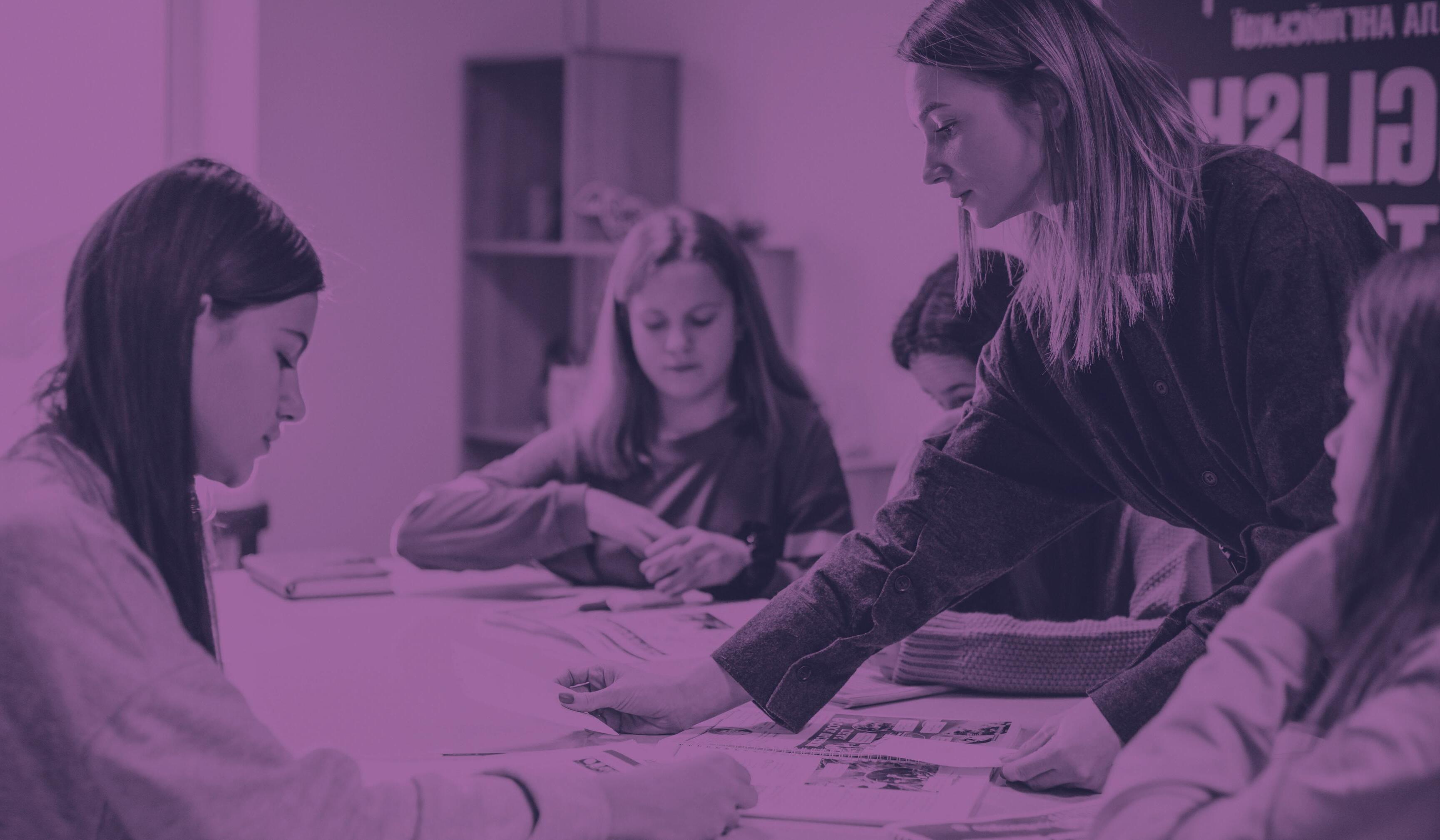
class on Monday and say: “This works'. We call this technique the “what to do cycle”, which consists of giving clear and observable directions, pausing and watching to see if the students follow it and letting them see you watch. Positively reinforce students who are doing well. “Thank you, Joey. Thank you, Carla.” And then correct as little as possible. To students who aren't doing the task, you can say: “I need to see a pencil more in motion, like this, thank you”. One teacher told me, “I practised for three hours that night with my colleague. The next day my class was completely different. I suddenly discovered that, if I change what I do, I can change the class. After several sessions, I suddenly became a teacher. I think the idea of practice is really very important and often overlooked.”
What should the main educational objective be according to TLAC?
Practising is important and changing the way you act in class changes the classes
What are the main signs of success? How would you describe a high-performing classroom?
I will tell you four things that I think are really important. The first is what I would call frequency of thought. Cognitive science tells us that students remember what they think. And one of the things needed to encode new learning and long-term memory is deliberate difficulty. You have to think a lot about things and deliberate on them to be successful. So one of the first questions I have to ask myself is whether the learning is rigorous enough. Am I asking challenging questions? Am I? Are
students thinking intensely about ideas that are important? You can't think much about things you have no prior knowledge of. So for this reflection process to work, I first have to give the students knowledge.
I think this has become a chronic problem in the United States. We hold the belief that higher-order thinking is the opposite of facts. It is said that we should not teach facts, which can be Googled, but that we should teach higher-order thinking. And I think that the cognitive science community is overwhelmingly clear on this, beyond debate. You can't think deeply about subjects you know nothing about. American geophysicist Lynnae C. Quick has an insight into particle physics. None of us knows anything about it, so we can't think critically about it. It takes deliberate difficulty and challenging questions for the thinking engine to be fuelled beforehand with the “petrol” of plenty
of knowledge. So, this first question, frequency of thinking, refers to whether people think a lot.
The second issue is frequency of participation. When I was a firstyear teacher, I was fresh out of college. I was an English major and loved talking about books with my professors. I imagined that this is what my class would be like. The first week I posed philosophical questions to my students about the symbolism of the text. I had a very intense conversation with Danielle because she was the most motivated and engaged student in the class. The other 29 students must have been trying to escape from the class, because only she and I were participating in the conversation.
One could argue that the frequency of thinking was high. I asked rigorous questions
that forced the students to think hard. But there was a participation rate of one. I have to make sure that all 30 students are thinking hard. So the thinking ratio must go hand in hand with frequency of participation.
On the other hand, it is important to understand that classrooms are cultures, above all. And I have to shape the culture of my classroom. There is no default culture. There is no natural culture. People often think that if I don't do anything to shape the culture of my classroom, what exists in that vacuum is its culture, the culture of the students, but that's simply not the case. It is just what arises in a vacuum, which is
seldom optimal from an educational standpoint. This vacuum often results in the stronger students taking advantage of and limiting the opportunities of the weaker or lower-status students. So I have to build a culture that changes students' perceptions of their relationship with school and their commitment to learning. That is fundamentally what we do. We are creators of culture.
A fourth aspect is checking for understanding. There is a great basketball coach in the United States named John Wooden. He used to be an English teacher. He was kind of like our version of Pep Guardiola or some great sports coach. People



























The perception of peer norms is the greatest motivational and behavioural influence
would ask him what his secret was, and he would say: the secret is teaching. The secret of teaching is knowing the difference between what we are teaching and what they are learning. Standing for an hour and talking about the root causes of the Spanish Civil War has little to do with students learning and understanding it. I have to constantly find ways to assess learning as it is happening and to be attentive to data streams that tell me whether the students have learned. That last part is constant real-time assessment. What do they know? Why do they know it? What can they do if they don't know it? I think this is another key element. By way of summary, the four things I have talked about are: the thinking ratio, the participation ratio, creating culture and checking understanding.
In your book “Reconnect”, you talk about the importance of creating a strong school culture that fosters meaning, purpose and belonging in students. Could you explain that? Why is it important to create school cultures that reinforce belonging? Isn't it enough for students to learn? Is there any evidence of its importance?
Yes. The entire third chapter in “Reconnect”3 is about belonging and its profound importance, and one part of it is looking at each other and talking to each other instead of ignoring each other. When someone speaks up in class, does the next student who speaks up build on what the previous student said? “Oh, what Anna said was interesting and I agree”, or “it was interesting, but I disagree”. This tells you that what you have said is important and that
your peers have valued it, and it encourages you to speak up again. Often in class a student speaks up and no one says anything afterwards, which means that no one cared about what they said. And then they don't speak up again. Or one student says something and another one raises their hand and says the same thing. The student gets the message that what they said is irrelevant and they should not have spoken up. Students get similar messages over and over again, and they stop participating and doing something that is educationally optimal. Another example of a sense of belonging is whether we talk to or ignore each other. Can we maximise the sense of belonging to create an educationally optimal learning environment? “Reconnect” is about the special importance of a sense of belonging.
There are many classrooms in the US, and I imagine in Spain as well, where we think students have the opportunity to learn. What we mean is that a student is willing to risk violating their peers' social norms and be the only kid who raises their hand and the only one who works. This is difficult when everyone else is relatively disinterested and the social code they share is to not raise your hand and not try very hard.
Social science research tells us that human beings are profoundly social. The perception of peer norms is the greatest motivational and behavioural influence. In reality, the opportunity should be that you go to a class that challenges you to be better, where you look around and are likely to see that your peers value you and support your success.
This is one of a teacher's main jobs. And it is very difficult to do. When things are difficult, you have two options: you can either accept the challenge and do your best to rise to it, or you can rationalise why it's not worth it or why it's not your job to take on that challenge, and you can justify why it's not your mission and
use your brain to explain why it's not your job. Many teachers do this. And they say it is coercive to try to shape students' behaviours and make them work in the classroom.
I think one of the most important things in the classroom is to get students to look at each other when they are talking. Imagine for a minute that we are reading a novel or a book, and I ask you to speak honestly about how you feel about it. And I call on you in class and you look around and your classmates are slouched in their seats, they're looking out the windows or at their phones, or they look at you when you start talking and roll their eyes and use body language and send social signals saying, “I don't give a damn what you're saying”. Who in their right mind would share their deepest thoughts about the novel in that situation?
If we want students to make the most of their opportunities to learn and develop what is inside them, they should not be talking behind each others' backs. They should not be talking to slouching classmates who say: “I don't care what you're saying”. When you're a teenager, you walk into a group of friends and everyone is looking at their mobile phones; no one looks at you when you walk into a room. This is a deeply disturbing message: they don't even care that you walked into the room. If you walk into a group and someone looks at you askance, you know you're going to have to fight to be a member of the group. All of that is communicated through your eyes. This tells us that the greatest builder of motivation and behaviour is our perception of
One of the most important things in the classroom is to get students to look at each other when they are talking
One of the ways to build a relationship with students is by showing them that they can succeed by keeping your expectations high
the group norms, because the group norms are what make us succeed or fail. They're what make us able to join the group and be part it. That exists in every classroom. I'm always looking around to see if my peers approve of what I'm doing, if they value me or roll their eyes when I speak. Students should be asked to look at each other, to try to control their bodies. They should be told that when another person is talking they should turn and look at them and try to show interest, even if they are tired.
Trying to look interested in what someone is telling you in the morning when you are tired is a small sacrifice on your part, but we all win when someone asks about calculus and I look at my classmates and they are looking at me and nodding and smiling and saying: “Go ahead and answer the calculus question. Do the best you can. We”ll support you.” That's the difference between becoming an engineer or not. Building that culture is part of our job as teachers. It is hard and largely invisible, but it is incredibly important. What role do teachers play in this? Can you give us an example or tell us a story?
I would just say that what I say to students matters. It is part of building the culture. If I call on Joseph and Joseph gives an answer and I say: “Great, Joseph, that was a thoughtful response. Thank you very much.” Does that seem good? Yes. It's nice to say, it's useful and it's good. But it is not as important as what Joseph sees when he looks at his peers and
speaks.
My job when building the culture is to shape the environment among peers and what peers communicate with each other, as much as what I tell them. I think teachers overlook this. Relationships are important. What teachers often misunderstand is they think that the relationship has to come first, that they have to have a relationship with the students before they teach them. There is an English saying that often appears in the social media: “People don't care how much you know until they know how much you care”.
How do they know you care? They know because you teach them well. They may or may not want you to be their friend. The assumption that students, especially poor students, need you, the teacher, to be their saviour and confidante in life is a myth. They may or may not want you to be the person they are going to fight with. But you shouldn't wait to find out to start teaching. In fact, the way to show them that they matter and their time matters, that you care about their progress, is to teach them, and teach them very well. I think that's one of the most overlooked things. One of the ways to build a relationship with students is by teaching them, taking their time seriously, showing them that they can succeed by keeping your expectations high. It is one of the reasons students love extracurricular activities which
You don't teach well because you have established relationships with students. You establish relationships with students because you teach them well.
are highly demanding. Kids who do theatre, music or sports tell you stories about the person who asked a lot from them. They tell you stories and exaggerate how many times the music teacher made them play their scales, or how many times the soccer coach made them run sprints. They are proud of themselves because of those expectations.
And they know that when the teacher held them to those expectations, it was a way of telling them: “I value you”. And that's why they tell you that story. So I believe in the idea of, “I show you that I believe in you by taking your learning seriously, teaching you well and showing you that I have the capacity and the ability to make you learn well”. I think that is a hidden part in building culture, the starting point of creating culture. The correlation is reversed: you don't teach well because you have established relationships with students, you establish relationships with students because you teach them well.
References
1 Lemov, D. (2021). “Teach Like a Champion 3.0: 63 Techniques that Put Students on the Path to College”. Jossey-Bass Inc., U.S.; 3. Editing.
2 Chunking is the process of grouping things into larger, more meaningful “chunks' so that they are easier to remember. The concept originates from a famous article by cognitive psychologist George Miller.
3 Lemov, D., Lewis, H., Williams, D. and Frazier, D. (2022). “Reconnect: Building School Culture for Meaning, Purpose, and Belonging”. Jossey-Bass Inc., U.S.
62
63
63
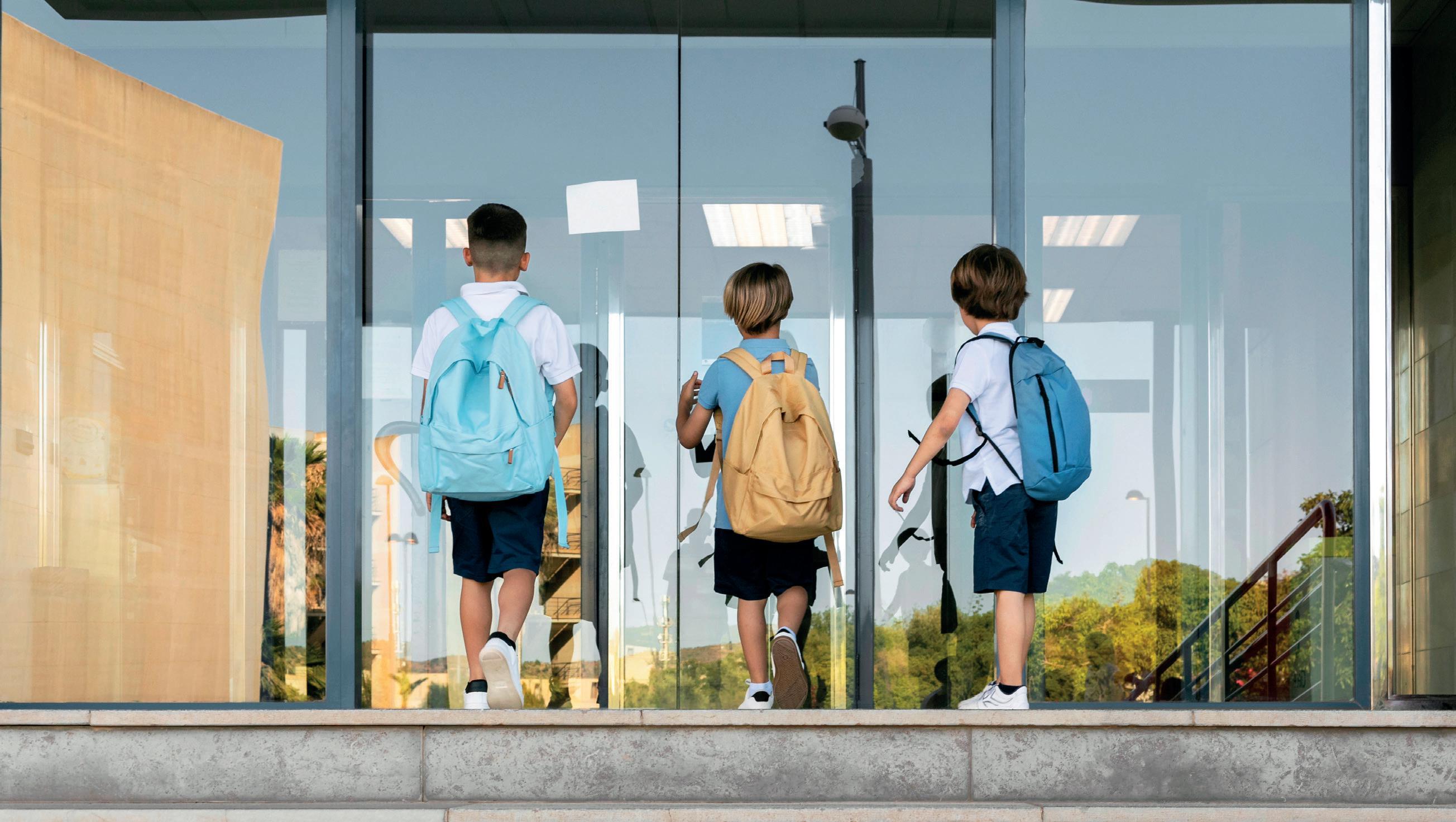
 by David Bernal López
by David Bernal López
School leadership has evolved significantly throughout the first quarter of the twentyfirst century in response to the changes and challenges that have arisen in the educational environment. With the onset of technology, globalisation and changes in society and societal expectations, school leadership has had to rethink itself to address current needs and demands. The following is a detailed description of the model promoted by FEDAC schools in recent years regarding the management of the idea of horizontal leadership that is being promoted among the different groups of teachers in this educational institution. One of the key ideas is the creation of two management teams that work to promote a paradigm based on the common good and leadership that facilitates transformation processes. FEDAC schools are in the midst in a process of change, improvement and innovation in terms of school leadership.
The educational practice in FEDAC schools is based on #avuixdemà (today for tomorrow). Not only is this project a pedagogical scaffolding for the 25 schools, but it also entails a structural, organisational and managerial rethinking.
Redistributing and rethinking the leadership model is a process that takes time. Therefore, the #avuixdemà tries to meet this need for change detected in schools that has been shaping the educational realities and singularities for almost a decade after a participatory process among the different stakeholders. Change, improvement and innovation must arise from a need so that everything proposed is sustained over time and allows for progress in each school's prospects.
This strategic plan includes a distributed and horizontal leadership model. This means that each person, regardless of their position and role, can contribute to the collective mission by changing each school's organisational culture. This idea comes from Frederic Laloux in his book “Reinventing Organisations” (2014), where the author defines the concept of TEAL. This model reflects the paradigm of creating shared purpose among
Change, improvement and innovation must arise from a need so that everything that is proposed is sustained over time






























In a “TEAL” organisation, personal growth is sought, diversity is valued and collaboration and innovation are encouraged
the people in each organisation, developing their personal fulfilment and offering structures that promote team selfmanagement. Thus, TEAL is not just a blue-green colour but is also an innovative perspective on management and leadership in organisations that proposes a new paradigm for the way organisations can be organised and operated.
Specifically, in a “TEAL” organisation, personal fulfilment and growth are sought, diversity and creativity are valued and collaboration and innovation are encouraged. This leadership and management perspective, linked to the idea of having a decentralised structure, signals a radical change from the traditional hierarchical models which are often found in schools' operating structures.
At FEDAC, different initiatives are underway to promote leadership skills that allow groups to be viewed as communities, in which each member contributes to and sustains the collective. It promotes the individual capacity to become shuttles that connect each of the teachers who can shape any school project from a more humanistic and effective team management perspective.
A management model that promotes decision-making based on trust, shared responsibility and a sense of collective purpose begins with the creation of two working teams within each group: blue and green. The choice of colours is in accordance with the official FEDAC colours and the hexadecimal colour code #00808080, Teal.
Blue encompasses tasks related to people, school and project management. It is made up of the general administration, the head of pedagogy, the head of studies and research and meaning (a figure based on bringing together the interreligious nature of the schools and the spirituality of both educators and children).
The green team, on the other hand, is a structure in which horizontal leadership can be articulated. The people who are part of it are responsible for promoting different areas in FEDAC schools. These are the figures Lem,1 Shaker, DecoArt, Comunicación, Participation Promotion Agent (PPA) and Mentor. The green team entails a reconfiguration and distribution of different roles in schools. The green team is viewed as a structure capable of facilitating different improvement, change and innovation processes among the teachers, both academic
and operational.
One of the main objectives of the green team is to encourage all teachers to participate by creating collaboration and cooperation networks: creating synergies. Therefore, the green team is an important agent in promoting transformation in schools and rethinking educational models together based on detecting the needs of the entire teaching staff. These educational models should accompany FEDAC schools of the twenty-first century. The ideation of the green team is also embedded in the essence of leadership today, which, as Otto Scharmer (2015) points out, lies in the ability of organisations' team leaders to enable people and the team itself to fulfil their purpose.
A cross-cutting idea that helps to explain the coexistence of two teams in the same school is the concept of the Common Good (Felber, 2015). This is a core concept of the #avuixdemà project that seeks to achieve the wellbeing of the people who are part of the institution, and of society as a whole, instead of only focusing on monetary profit. Operating with a clear social and ecological purpose, where economic indicators are redefined to include factors such as social justice, sustainability, democratic participation and ethics, is part of the shared ideology of both teams.
It may seem counterproductive to set up two parallel structures in schools, but the green team becomes a process of transparency and agility in collective decisionmaking in all schools. The green team aims to promote entrepreneurs and idea-generators, competent and innovative teams following criteria of self-regulation, coordination, commitment and rotation. The green team has to create the conditions needed to promote school, extracurricular and inter-school teaching initiatives. The successes of one team directly and indirectly benefit the other.
In order to achieve this model with the leadership organised in two teams (green and blue), a range of actions are being promoted in the 25 schools that make up FEDAC. However, these actions are being framed within different internal and external training programmes that give meaning and sense to any implementation of organisational change.
Internally, a supportive, empowering training programme has been developed in FEDAC's teacher training pathway, the Socrator programme. The proposal for continuous teacher training in the schools fosters a distributed leadership model capable of ascertaining and helping


to promote people's concerns and energies. It is understood that this opportunity to involve each teacher in the collective project will gradually make it possible to generate more solid structures in terms of credibility and group trust.
Externally, different programmes have been carried out in this process of transforming teacher roles through continuous training, such as with the University of Mondragon and TeamLabs, which are helping to bolster the leadership ideology with theoretical and practical arguments. Horizontal leadership is the transformative idea behind rethinking the current structures: encouraging participation and collaboration through the questioning prompted by the training received and promoted in FEDAC by internal and external stakeholders.
Both the internal and external programmes seek to empower teachers to implement their leadership, management and team facilitation competencies in order
The proposal for continuous teacher training fosters a distributed model of leadership that is capable of helping to promote people's concerns
to achieve the aforementioned paradigm based on selfmanagement, personal fulfilment and shared purpose.
Different junctures and gatherings during the school year facilitate teaching connections aimed at developing the 24 challenges that make up #avuixdemà. In each FEDAC school, the blue team and the green team participate in designing the different strategies in order to bring them to fruition by achieving the 248 attractor objectives of the challenges (AOCS). The leadership role on either team must be active and participative, keeping a curious, inquiring attitude for sustained improvement.
Finally, the fundamental idea of distributed leadership is to emphasise that everyone is part of the whole. Thanks to the autonomy structures that exist in schools and the continuous learning offered, it is essential that a leader serves the people and the group. As Marcet (2018) notes, to lead is to serve with vision, and in the case of school innovation, to lead is also to understand risk. Leaders can rethink new approaches to the group away from vertical ideas and promote a horizontal aspect of creative leadership inside and outside the school.
In recent years in FEDAC, I have experienced the promotion of the personal leadership project viewed as the prelude to collective leadership. And I like the idea that school leadership, whether in a teaching or other role, can facilitate the transmission of emotions and convictions
66
67
67
about the mission, vision and character of an educational project. As FEDAC's general director, Modest Jou, points out, “without people who do not believe in the common good, there is no leadership. Leadership must bring out the best in people (educators and learners) to make our schools resonant spaces in their environment.”
School leadership can encourage people to adopt the convictions about the mission, vision and character of an educational project
David Bernal López is an educator at FEDAC schools, the pedagogical director at the FEDAC Canet school (Canet de Mar) and a participant in developing innovation and improvement programmes within the institution. He combines his work as an educator with teacher training, one of his specialties being Game-Based Learning.
 FEDAC Schools
FEDAC Schools

1 FEDAC schools promote the Leader In Me (LEM) programme based on the best-seller “The 7 Habits of Highly Effective People” by Stephen Covey.
2 Chunking is the process of grouping things into larger, more meaningful “chunks' so that they are easier to remember. The concept originates from a famous article by cognitive psychologist George Miller.
3 Lemov, D., Lewis, H., Williams, D. and Frazier, D. (2022). “Reconnect: Building School Culture for Meaning, Purpose, and Belonging”. Jossey-Bass Inc., U.S.
Covey, S. R. (2005). “The 7 Habits of Highly Effective People” (1st ed.). Association for Supervision and Curriculum Development. Covey, S. M. R. (2006). “The Speed of Trust”. Grupo Editorial Norma FEDAC, E. (2016). “Avuixdemà”. https://escoles.fedac.cat/avuixdema/ Felber, C. (2015). “The Economy for the Common Good”. Deusto. Laloux, F. (2014). “Reinventing Organizations”. Harp. Marcet, X. (2018). “Esquivar la mediocridad. Notas sobre management: complejidad, estrategia e innovación”. Editorial Platform. Otto Scharmer, C. (2017). “Addressing the blind spot in our time. An executive summary of Otto Scharmer's book “Theory U: Leading from the Future as it Emerges” https://innovacioncomunitaria.files.wordpress.com/2014/05/tu-execsum-spanish.pdf
 by Francesc Balagué Puxan
by Francesc Balagué Puxan
In recent months, there has been very tangible and palpable evidence of what many critics and analysts have been pointing out for some time (such as Sir Ken Robinson as early as 2006 with his presentation “Do schools kill creativity?”1) regarding the need to adapt and update the how, what and why of teaching-learning processes to new realities and needs that a complex future will require. Different applications of artificial intelligence tools have burst into many areas of society at an unexpected rate, leading to profound changes and unforeseen shocks.
The fact that people are unable to distinguish what is real from what is not has consequences that we have never had to face before


The most significant of all, according to Geoffrey Hinton,2 one of the creators and godfather of this technology, is the difficulty humans will have distinguishing what is and is not true. Until now, we had people and institutions whom we had given the power and credibility to somehow be the validators of certainties and truths. But right now, there are already examples where it is impossible to distinguish whether a news item, scholarly article or video is real or not. The fact that people are unable to distinguish what is real from what is not, who has created that information and for what purpose, has unforeseeable consequences that we have never had to face before.
And this little fact can completely shake up one of the functions of teaching related to knowledge and critical thinking. It forces us, more quickly than expected, to put a lot of emphasis on helping students understand a changing world, even though we do not yet have enough resources or tools to share consequences, examples or specific solutions that could serve as references for them.
71
What will help these children to cope with such a diverse range of scenario is lateral skills
In its report “The Future of Work”,3 the World Economic Forum illustrates this uncertainty with a specific example: 23% of jobs will change by 2027, with the creation of 69 million new jobs and the elimination of another 83 million. If this is going to happen in a period of four to five years, for what society and professional future are we preparing students who are now six to twelve years old, who won't be joining the work force for another ten years? Therefore, more than learning specific knowledge, what will be really necessary and what will help these children to cope with such a diverse range of scenarios, to be able to adapt to constant changes and to keep evolving, is lateral skills.
In this context, we will surely also have to change the
educational quality benchmarks we have used until now. Quality standards, national and European placement tests and other educational system benchmarks will quickly become obsolete as quality assessment will need to measure the degree to which students are developing certain skills and are able to adapt to and cope with change. In this framework, if a great deal of evidence points to the fact that educational quality depends directly on teacher quality, we will also have to rethink and analyse the references we have used to measure this quality until now.
In our case, the CIB-Culinary Institute of Barcelona4 is a school of cooking, creativity and innovation created five years ago with our sights set on this new context. One of our objectives is to help students understand this complexity and especially to awaken questions and curiosity that will keep them alert and attentive to seeking the resources and tools that will best help them to deal with the different situations and problems they will face.
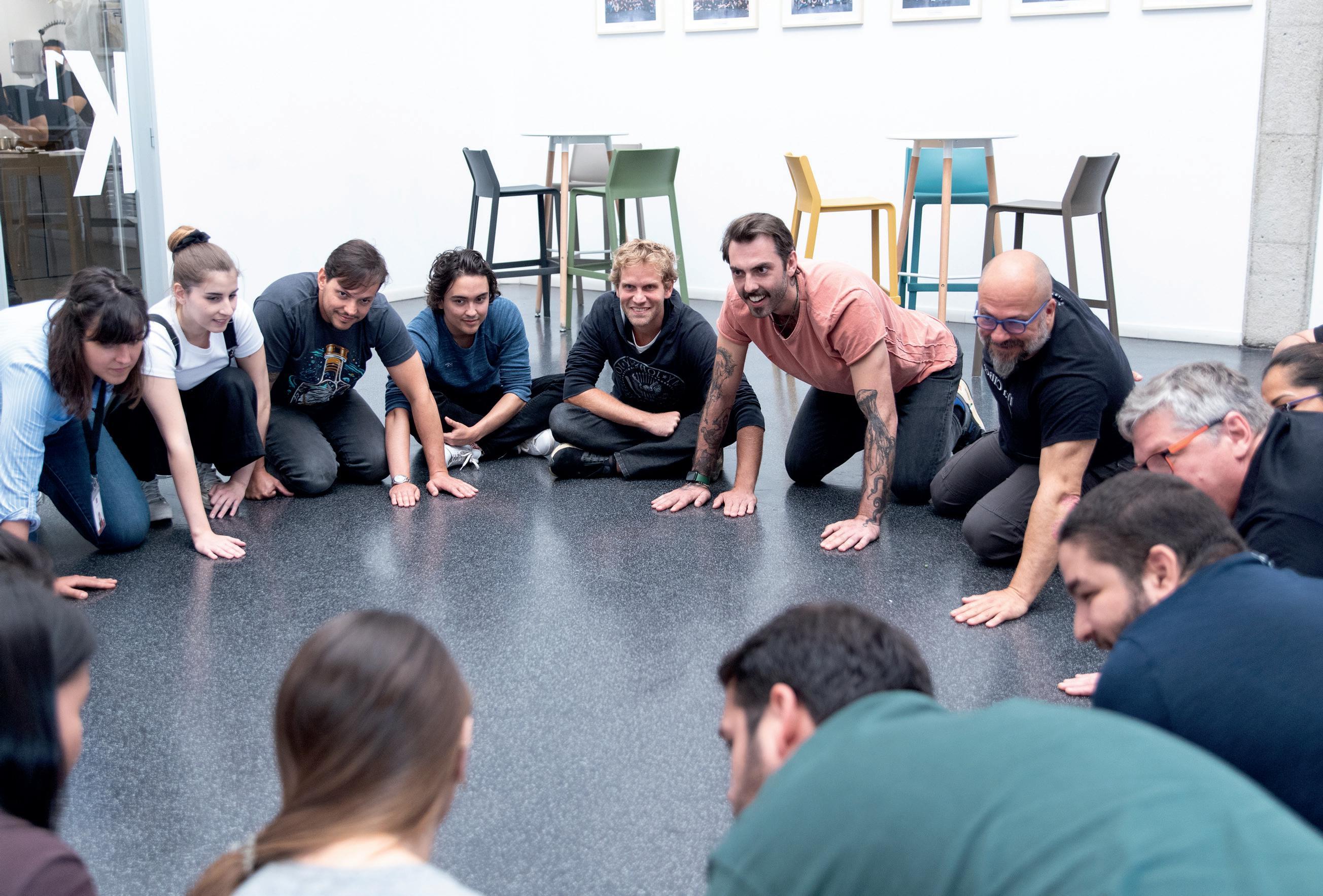 © CIB Culinary Institute of Barcelona
© CIB Culinary Institute of Barcelona
Our institution's educational context may not be standard, given that approximately 85% of our trainers are not education professionals (teachers, professors or lecturers) but professionals from a wide range of fields who come to our educational institution to share their knowledge and professional experience. Even though this makes us stand apart from many standardised teacher training and improvement practices or strategies, we are still just as interested in and concerned about teacher quality and educational quality as other institutions. However, we are approaching it from more heterogeneous perspectives.
Our starting point is different from other schools, given that most of the teachers at our institution have never received any type of pedagogical training. However, this has never stopped us from working towards teaching and educational excellence in all our programmes, and because we have very few references from similar schools to give us clues or guidance, we have had to learn and improve based on trial and error. Only if we are able to try
Only if we are able to try many things and learn from the ones that don't work can we continue to evolve
many things and learn from the ones that don't work can we continue to evolve.
Some of these actions are summarised below, with the understanding that we still have a long way to go to make them truly efficient and effective:
– Creating a teaching community and sense of belonging: Because we are professionals from very diverse fields, some of whom only share training sessions at our school, creating this sense of community and bonding is very important for the school's culture and teaching.
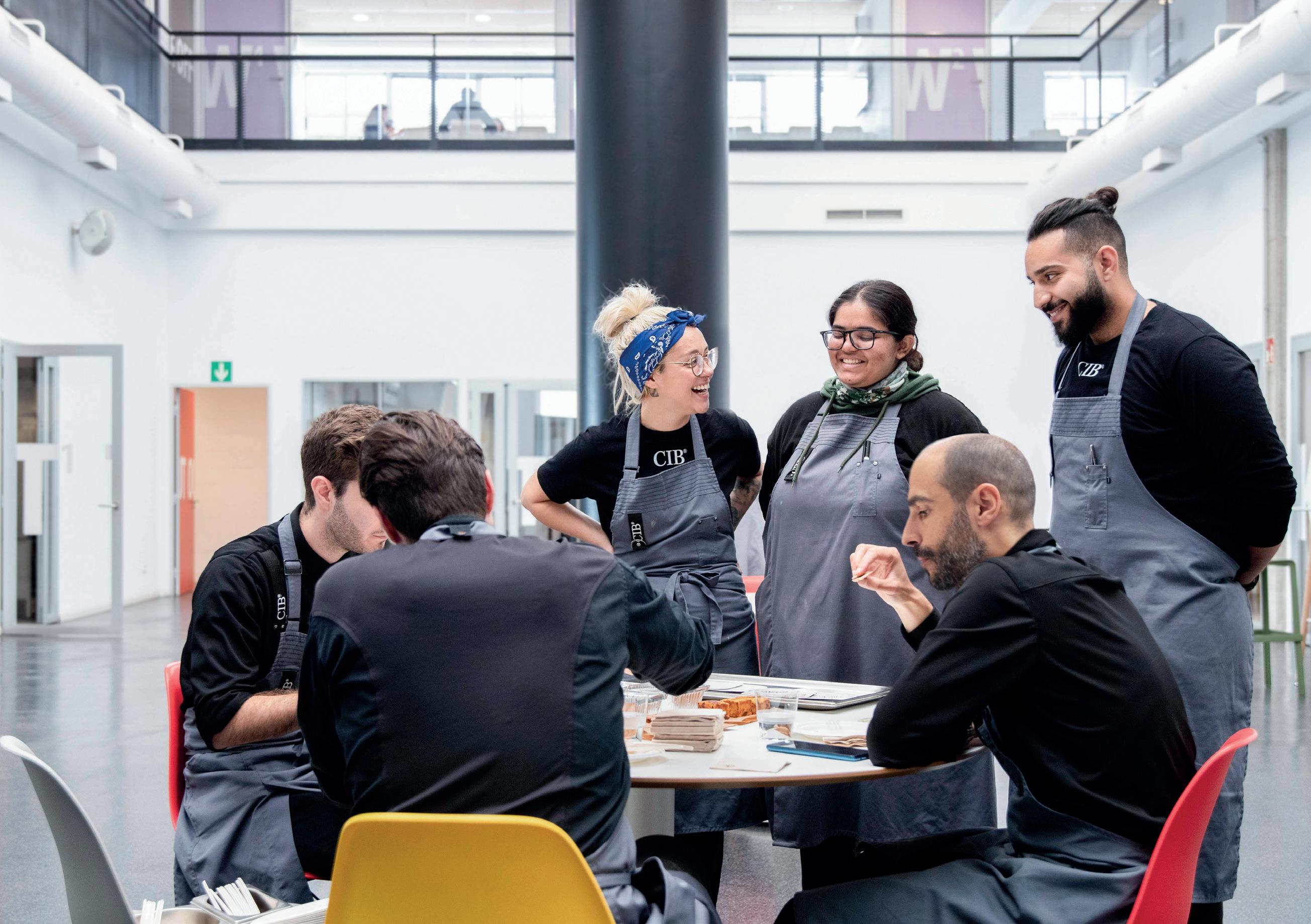
– Teacher training: We promote teachers' meetings that are always accompanied by training and a personal and professional growth activity. At the same time, we are designing an online continuing education plan that will have a broader and more continuous scope over time.
– Teacher support office: We have created a general, methodological and teaching practice support process to help teachers to expand their set of tools and classroom dynamics that allow them to offer studentcentred teaching that is more participatory, where experimentation and learning by doing are naturally integrated.
– An eye on the future: We do with our teachers what we do with our students; we want to bring them closer to this future focus so they are aware of changes and trends, as well as providing them with inspiring input from a wide range of fields (some technological and others more related to user experience), which can enrich their professional work.
– Infrastructures to support teachers: The classrooms and spaces have been designed to support the methodology and give teachers flexibility in the way they use and apply them. This covers everything from chairs with wheels that allow classroom spaces to be reorganised to the use of simultaneous translation within classrooms or having several projection screens to make it easier for all students to see the audiovisual support if they are seated in a circle, for example.
In short, teacher training has to be closely aligned with these paradigm shifts that some technologies are already bringing about in order to help teachers understand and keep up with the accelerated and constant pace of change in which we will be immersed in the coming years.
Francesc Balagué Puxan is the academic director of the CIB Culinary Institute of Barcelona. He is primary school teacher, educational psychologist and PhD in educational multimedia. He specialises in the design of learning experiences, creativity and innovation, has conducted training at all levels, has been an entrepreneur and is the author of several books and publications.
Notes
1 “Do schools kill creativity?” Sir Ken Robinson, TED Talk. https://www.ted.com/talks/sir_ken_robinson_do_schools_kill_creativity/c?language=es
2 Geoffrey Hinton, “MIT Technology Review”. https://www.technologyreview.com/2023/05/02/1072528/geoffrey-hinton-google-why-scared-ai/
3 “The Future of Jobs Report 2023”, World Economic Forum. https://www.weforum.org/reports/the-future-of-jobs-report-2023/
4 CIB·Culinary Institute of Barcelona. https://cib.education/

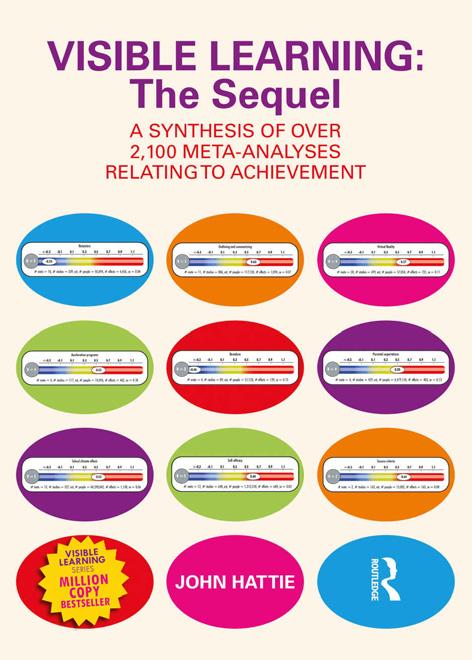

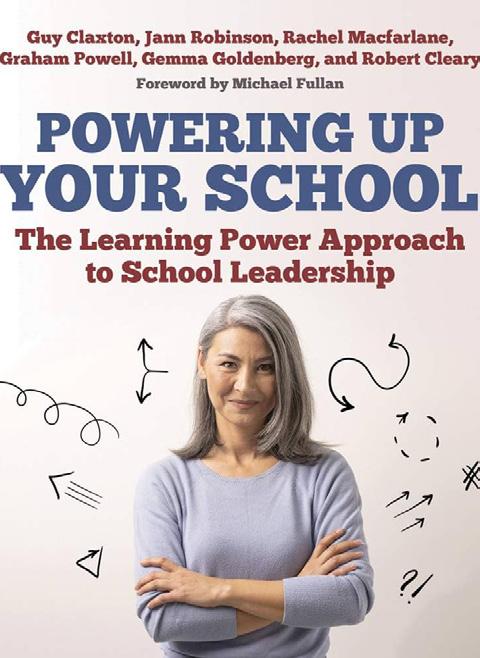
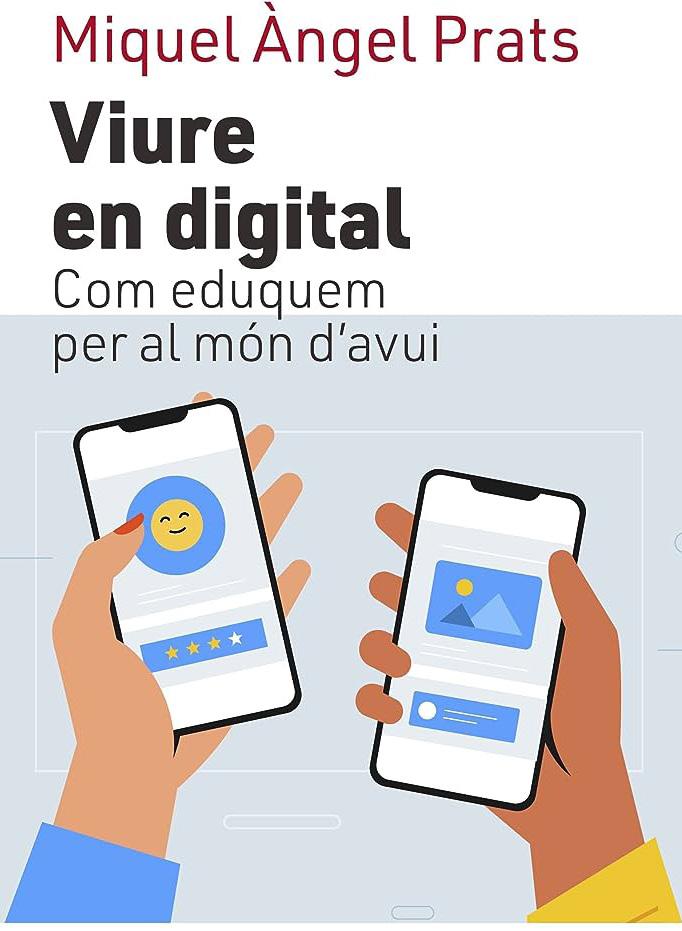
This book is an update of “Visible Learning” (2008) defined by “The Times Educational Supplement” as the “Holy Grail of teaching”. In this sequel, John Hattie reveals how “Visible Learning” has been implemented over the years, how it has been understood and misunderstood, as well as the future direction the field of educational research should take. In this edition, Hattie updates his earlier work and highlights the need for teachers to consider assessing the impact of that evidence on student learning in their classrooms.
This guide for educators criticises the time constraints and overload that many teachers face. This is giving rise to a type of reorganisation that has been coined “deimplementation” in the book. It involves emptying the “space' of everything that is not a priority and instead filling it with things that are truly worthwhile and have a positive impact on the students. The outcome of the work of the book's prestigious authors is a four-step process that consists of reducing teaching and replacing it with other highly effective proven practices, in order to get back our lives without harming our students.
Through a wealth of different tips, this book aims to integrate the Learning Power Approach (LPA) into schools. LPA is a form of teaching that seeks to give students the ability to solve problems on their own as well as collaboratively. The aim of this problem-solving is for students to develop the confidence, creativity and perseverance needed to adequately address the issues facing them. It also promotes strength of character and academic success and outlines how to achieve them.
In this book, the author discusses the opportunities afforded by technology to bridge the learning gaps caused by disparate socioeconomic situations, without ignoring the threats that also lurk within it. With a large dose of common sense, he offers criteria so we can learn to make good use of these tools and pass on to future generations the proper judgment they will use in their learning, their entertainment and their way of interacting with others.
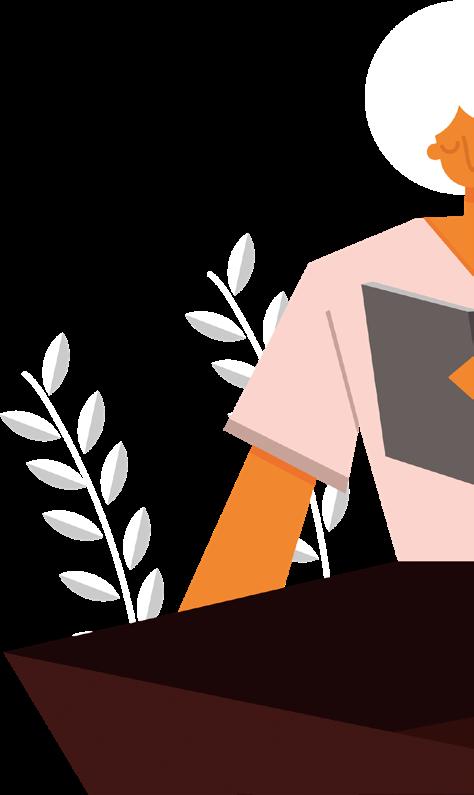
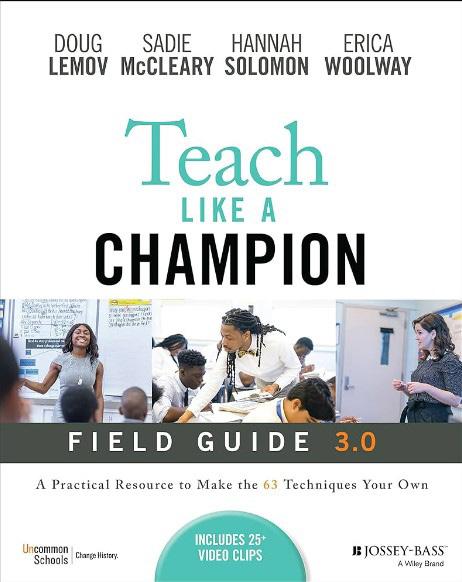



3.0
Doug Lemov Learning Bits, 2023With techniques and practices to implement, this book offers a complete guide to building a healthy environment and a school culture within the classroom permeated by trust, responsibility, respect and excellence, among other precious values. It is a didactic book targeted at teachers who want to improve their experience. At the end of each chapter, they will find activities and methods that will help them to apply these techniques and put them into

The book provides teachers with a didactic guide to enable them to apply effective thinking to content. It is full of case studies, providing the reader with a methodology on how to teach students to find evidence to support their conclusions, how to listen carefully to others, how to develop creative thinking and how to communicate clearly and rigorously. The authors of the book conclude that time spent learning radically improves students' intellectual performance.
By means of a simple question that serves as his thesis, the author develops an entire philosophy about how it is possible for a group of leaders to do the same thing or behave in a similar way and yet get such disparate results, with some succeeding and others failing. The book seems to be the key factor to take into consideration, because nuance is precisely the capacity for discernment that allows us to interpret situations clearly and respond to them appropriately. Thus, Fullan confirms the close connection between proper judgment and learning.
This book is a journey through the many secrets of memory. It takes us on one of the most fascinating scientific adventures in a quest to discover who we are through extraordinary human stories that have revealed the virtues and flaws of our most precious gift: memory. The author teaches us that memory is the ability to learn, and we see how it is developed and organised, what factors influence it and why it fails us so often. This unique journey reminds us that we are all freer thanks to our memories.

Andy Hargreaves (Accrington, 1951) is a visiting professor at the University of Ottawa, Canada, and a research professor at Boston College, USA. He is an elected member of the US National Academy of Education and co-founder and president of the ARC Education Collaboratory. He has published more than 30 books and has won eight Outstanding Writing Awards. He has received awards for his services to public education and educational research in Canada, the United States and the United Kingdom. Two of his most recent publications are: “Well-Being in Schools: Three Forces That Will Uplift Your Students in a Volatile World”, published by ASCD, and “Leadership from the Middle: The Beating Heart of Educational Transformation”, published by Routledge.


You are a prominent expert in educational quality and have been advising politicians in different countries for years. In your book Well-Being in Schools, you uphold the importance of a kind of education that seeks students' well-being. What do you think the priority objectives of today's education systems should be? Well-being is always a priority. Since schools began, we have focused not only on academic success but also on the development of the person: what that person will be like as a human being and how he or she will contribute to society.
The International Baccalaureate (IB)
Our health is even more important than our success as human beings
programme has a community service component. Greek philosophers spoke of the importance of educating the whole person. This has always been an important issue.
In recent years, since 1990, the focus has shifted from it to other issues in more and more countries. For example, PISA provides international comparisons between countries in testing, literacy and mathematics; that is, it tests traditional skills and knowledge. All of that is important, of course, but its competitive nature has


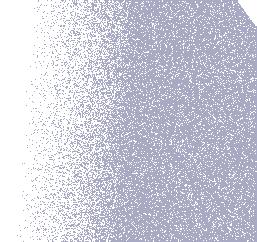

Well-being is important for learning and learning is important for wellbeing
sidelined other important purposes of education. When we had the global COVID-19 pandemic, which was a terrible experience in many countries, we were reminded that our health is even more important than our success as human beings: our physical health, our mental health and the health of our communities.
Since the pandemic, wellness has become an important part of our daily lives. We have thought about it in two ways. First, I am co-leading a large project funded by the Lego Foundation on play-based learning in the middle years of schooling for vulnerable children and have spent one week a month visiting schools across Canada. One thing that teachers and principals talk about over and over again is what the kids have missed and yearn for. During COVID, they spent too much time in front of screens, too much time playing, too much time isolated from other young people. They have gone back to school not knowing how to play or how to interact with their friends and teachers. They are not able to regulate their behaviour. So schools have had to spend a lot of time getting them to learn these basic ways of being human. This is one of the reasons why schools are so important. This is what we want to emphasise today: to make children feel safe, to make them feel that they belong and can participate, so they feel that going to school has purpose and value for them. Once you get to that point, you have to go beyond thinking about well-being as security; you also have to think about how learning can help well-being. I have visited projects that schools
are doing outdoors. One school organised a film festival with the films it had made. It is clear that when learning is purposeful, engaging and collaborative, it also makes you feel good. Well-being is important for learning and learning is important for well-being.
What is the relationship between well-being and life satisfaction? Should performance be prioritised over student well-being, or the opposite? What solutions do you propose?
We have a lot of global data from different countries about their success in academic performance and well-being. Few countries are successful in both. Some Nordic countries, and especially the Netherlands and Ireland, seem to be able to help their children succeed and also be physically, mentally and emotionally healthy. These are somehow a feature of both society and schools. Sometimes they go together, but often they don't. One thing we do know, for example, is that the more inequality there is in a society, the worse people feel. So, it is not only an educational issue but also a social one.
Some reasons for not feeling good in school can range from being bullied to not attending classes or not feeling successful. We know that severe inequality breeds ill health. UNESCO has clear data on that. And we also know that there are countries with strong performance but low well-being. Many but not all of them are located in Asia or East Asia. In the end, you wonder if it's the culture. In East Asia, well-being is defined differently. It does not mean being happy; it means being loyal to your family, respecting your parents, being part of a group, working hard and sacrificing. For them, being successful does not always mean being happy. Some say that these well-being measures are culturally biased. And this applies to many cultures, of
course, not just Asian cultures. Think of migrants from Eastern Europe or North and West Africa. How we define well-being is very important. It is more than happiness.
England is in the group of countries that are doing well in performance but poorly in well-being. You think: “Why is England there? What does it have in common with these other countries?” The main answer is that you have this incredibly competitive approach to testing, as well as testing in all schools. During COVID, we discovered that one of the causes of children's discontent is the huge pressure of exams and tests. There are things that schools do in some places that are not good for students' well-being. One of the best ways to improve well-being is to get rid of things that create discomfort. Our schools are capable of doing this.
There have been many attempts to improve the well-being of students, from SEL (“Social Emotional Learning”) programmes based on Goleman's Emotional Intelligence, to the development of the Growth Mindset defined by Dweck, Angela Duckworth's “GRIT”, Mindfulness and the CASEL framework in the US. But none of them addresses any of the essential aspects of people's well-being, such as spiritual or physical health needs. How would you define educating for a person's “well-being”? What aspects of it should be addressed by schools?
I would like to talk about the relationship between well-being and what people call social and emotional learning. Many of the ideas bandied about in the world of education originate in the United States. Education in the US is dominated by the discipline of psychology; they
The more inequality there is in a society, the worse people feel
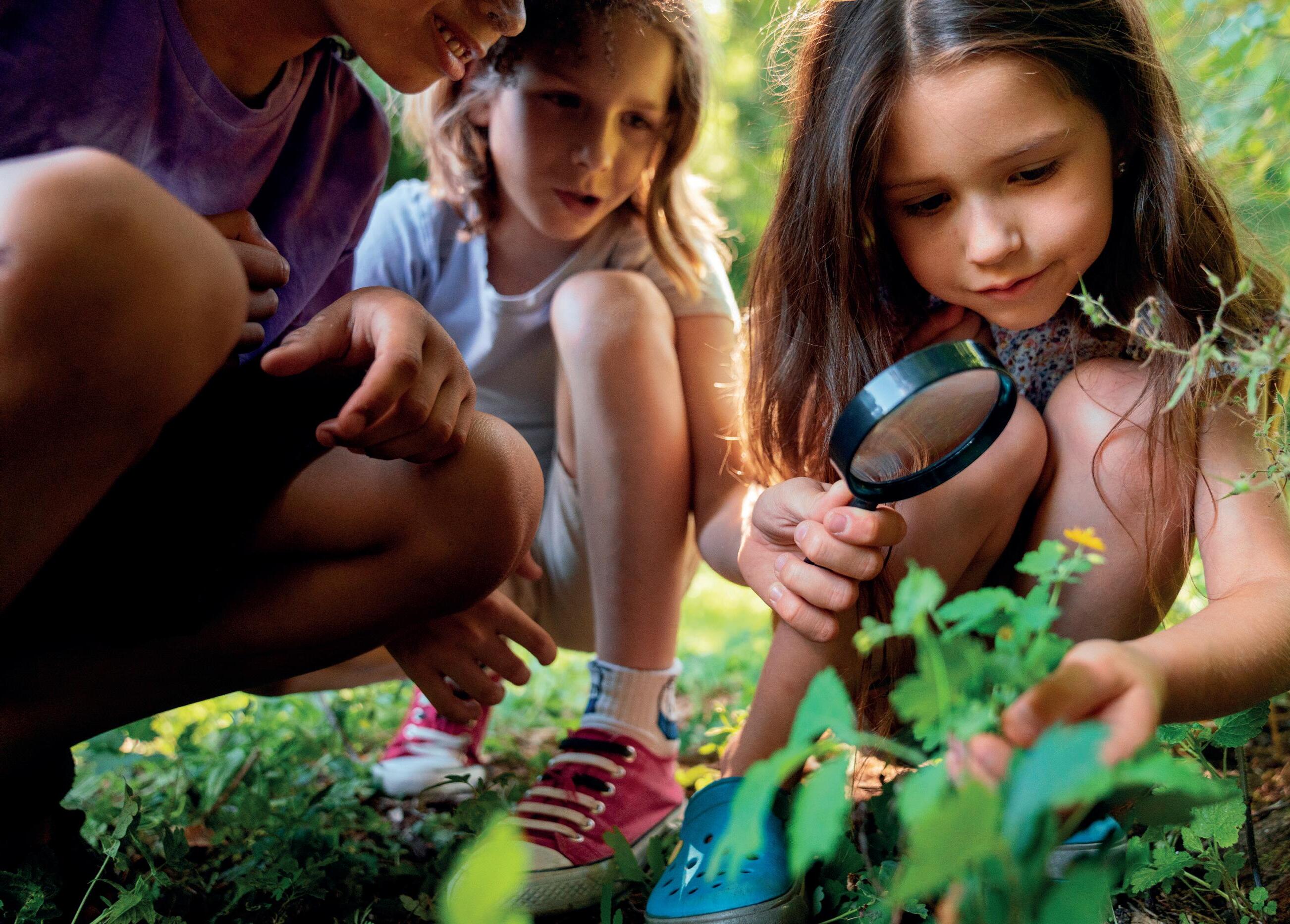
One of the causes of children's discontent is the huge pressure of exams
are interested in how we can change individuals. Starting in the 1980s, psychologists in the United States began to develop a new line of work called positive psychology, which really addresses the fact that we don't have to wait for society to change in order for individuals to improve, no matter what is happening in society. We can help improve people's lives by how they cope with their own lives. Through positive psychology, we can train them to be more optimistic and have a growth mindset, to be more resilient and recover from stress and
post-traumatic stress, to be more attentive and calm when they are anxious or angry, and to self-regulate their behaviour when they get out of control.
In the United States, almost no one uses the term well-being, because in reality well-being forces you to consider a person's life as a whole and to talk about schools as institutions and the nature of society. Instead, social and emotional learning focuses solely on the individual and his or her relationships. Governments like it because they don't have to change anything. Individuals have to change themselves with a bit of help from this vast industry of psychologists. So the constraints that exist benefit social and emotional learning. I have been diagnosed with ADHD (Attention Deficit and
Hyperactivity Disorder). As an adult, I don't think of it as a disorder. I think of it as my personality. But sometimes it has negative consequences for myself and others, and I have received some counselling. It has helped me a lot to think about my relationship with this part of my personality and how I can make the best of it and limit the damage to my family, my co-workers and the people around me. Social and emotional learning is useful, but it is not the only answer.
In the book, we talk about some of the social problems
The term well-being forces you to consider a person's life as a whole
Digital learning is good, but using it excessively is very detrimental
that create discomfort, such as too much technology, too much screen time, children not playing outdoors enough... Social and emotional learning has nothing to do with physical well-being. Learning outdoors is free. If you go outside to teach you end up with technological and digital problems. Digital learning is good, it really is. But using it excessively and poorly is very detrimental. Social and emotional learning has nothing to say about that. It has nothing to say about the value of outdoor learning within the school day, which should not be viewed only as a break or when school is out but as part of learning.


Moreover, it says little about learning with a social purpose which could address issues such as climate change or questions about working with indigenous communities to improve water quality. In this case, schools work with communities with 3D printers to help them create things that can filter water. Food is grown in many of our schools even indoors, in collaboration with local loggers and timber merchants. They then go out to distribute this food to elderly people to build relationships with them.
Social and emotional learning has nothing to say about one of the purposes of education being social transformation, because it is scared of politics and frightened of both economic and business interests. Everyone prefers the solution of kids fixing themselves with a little help, rather
than fixing schools and fixing society so that they are better places for people to live. Why teach students how to be more resilient in a bad institution and in a bad society, instead of studying how we can improve the institution or society so that there is less need to be resilient?















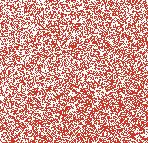
If we want to move towards universal well-being, as you yourself propose at the end of the book, what is the main role of the teacher and what is the most important aspect of their training? The most important thing for universal well-being is for all teachers to consider the well-being of their students one of their priorities. So well-being is not just the job of the guidance counsellor or the special education teacher, or the specialist who deals with PTSD (post-traumatic stress disorder), or the speech specialist who helps you with speech disorders. The children's well-being is the responsibility of all teachers. That's the first thing. The second depends on relationships. Attention should be paid to three types of relationships: 1) Children's relationships with each other and how they are constructed through the learning process. For example: children learn to work in groups; to appreciate and value each other's differences; to resolve conflicts together; to experience democracy, because the classroom should in some ways resemble a democracy and give students a voice in their own learning. 2) They must also learn


All teachers should consider the wellbeing of their students one of their priorities
how to maintain relationships with the teacher, with adults in the school and community relationships, as well as with their projects and with all everyone who uses common areas such as the library or the gymnasium. These things are also important. Finally, 3) We should start by getting rid of the bad stuff. If the building is not a good place to learn, you need to get outside more. Rearrange the furniture to be more inclusive. Many of the schools I have been to do not have square or rectangular desks or tables. They are like the schools of indigenous communities, circular or wavy in shape because they encourage more inclusive interactions. Think of your assessments in a way that doesn't rank students or punish them if they do poorly, that doesn't embarrass them. Still, it's better to give them feedback so that they can improve and build confidence over time. Think about a curriculum that connects to people's identities.
My next book is about the age of identity. What I mean is that it is difficult to succeed in school if you can't see yourself in the curriculum. If you come from another culture, there should be ways for teachers to know the fullness of who you are instead of just ticking a box that says you are Black or a refugee. It's all about knowing who everyone is as a whole, so that we can respond to that and
If the building is not a good place to learn, you need to get outside more
make them feel confident, succeed and thrive. These are very basic things that we can all do.
What is your opinion on the relationship between well-being and character education? Do you think they are related?
Well-being is about developing yourself, your identity as a human being. The fundamentals of Eric Erickson's psychology state that we go through developmental stages over time and reach particular crisis points, such as adolescence. So, part of the goal of being in school is to learn to find your way and grow as a human being through that stage over time. Some call it personality; others call it character. Sometimes character education develops a political or even religious point of view in which people try to develop particular virtues, such as honesty or courtesy. These are good things and there is nothing wrong with
Part of the goal of being in school is to grow as a human being while learning
them. But character education has to be complemented by the different ways of being in terms of our identities, our backgrounds or the ways we experience and express our emotions.
You may have noticed that I use my hands a lot when I talk to you. People in Spain say I'm not very English because I use my hands a lot and I'm very expressive. But I come from the north of England, and in the north of England we are very expressive. In the south of England, people are quite repressed and believe that you should not express your emotions too much. What I mean is there is not just one way to be English; there are different ways to be English. If you think about what that means for other nationalities and identities,
you will see that when we talk about character education, these fascinating differences should be taken into account.
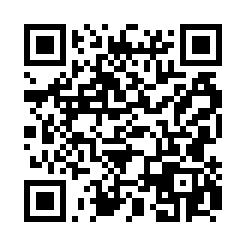






Qualifying and approved 50 hrs.
Iniciación en el uso de la Tecnología Digital Educativa para apoyar la enseñanza y el aprendizaje
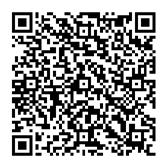
€129
DISEÑO Y EVALUACIÓN DE SITUACIONES DE APRENDIZAJE
Qualifying and approved 30 hrs.
Aprendizaje y evaluación competencial. Marco Educativo Europeo (LOMLOE)

€99
CADA ALUMNO Y ALUMNA IMPORTA POR IGUAL
Qualifying and approved 30 hrs.
Cómo garantizar la inclusión y el progreso en tu aula

€99
DESTREZAS TBL PARA UN APRENDIZAJE PROFUNDO
Qualifying and approved 30 hrs.
Situaciones de aprendizaje basadas en el pensamiento

€99

The heroism of giving one's life until one's last breath to help people think better
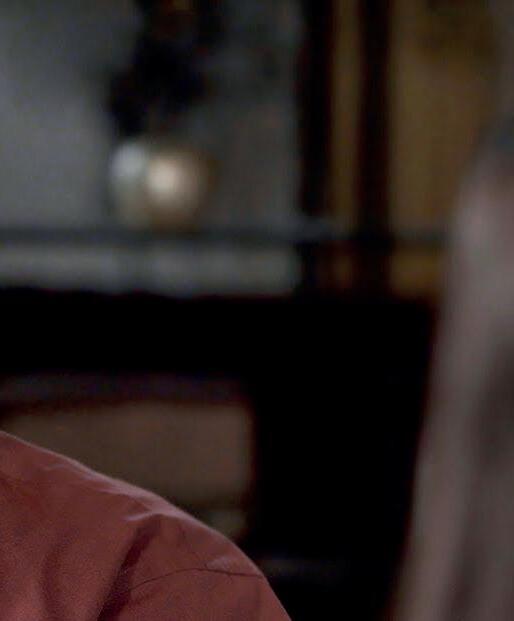
Tribute
Robert Swartz (1936 – †2022), held a PhD in Philosophy from Harvard University, was a professor emeritus at the University of Massachusetts, Boston, and was the creator, along with Sandra Parks, of the Thinking-Based Learning (TBL) methodology, which replaces teaching based on memory with teaching based on active thinking. He founded and directed the Center for Teaching Thinking (CTT), dedicated to promoting this methodology in the United States, Spain and countries around the world. For the past 30 years, he worked with teachers, schools and universities internationally on teacher development, curriculum reorganisation and education projects through the infusion of critical and creative thinking into the teaching of content.
by Ana Moreno Salvo and Toni Gallemí SolAll of us who knew Bob agree on his great qualities as a thinker, educator and friend, but we know little about his life before TBL. What was young Bob like? What was his youth like? How did he get his start in thinking? How did he contribute to improving education in the world?
Robert Swartz was born in 1936 to a devout Jewish family in one of America's oldest towns, Sandwich, Massachusetts. He liked to say that he had grown up by the sea. Even as a child and adolescent, he loved to question things and think. At the age of 13, after his Jewish coming-of-age ceremony, he decided to stop practising his faith, but he somehow always felt linked to the history of the Jewish people. He says that on one of his trips he wanted to go to the Red Sea and got excited remembering the passage in the Bible when Moses leads his people through the waters. Then his parents moved to Boston and he attended the Boston Latin School, the oldest school in the country. From there, he was admitted to Harvard, where he studied philosophy, and a few years later earned his doctorate from the same university. He also spent some time studying at Oxford and Cambridge in England and took the opportunity to hitchhike around Europe. One day he met another traveller on his way to Spain and asked him: “What's in Spain?”, to which the traveller replied, “there is a fair in Seville”. So he went with him and fell in love with the country forever.
Although he claimed he was not cut out for marriage, he married twice and had two children from the first marriage: Jen, as he called her, and Alexander. He worked at several universities and started the philosophy department at two of them, and he retired in 2002 as professor emeritus from the University of Massachusetts.
Bob himself recounted his early forays into education in an article that Harvard University solicited for a book written by distinguished alumni on the sixtieth anniversary of his graduation.
In recognition of his contribution to improving education, Harvard asked him to write his ideas on secondary school learning for the chapter on education.
In it, Bob Swartz tells how it all began one day in 1976, when the direction of his professional life changed completely. At that time, he was a full professor and head of the School of Philosophy at the University of Massachusetts, and Kevin O'Reilly, a high school history teacher and good friend of his, invited him to attend one of his classes with his students one day. He wanted to show Bob something had had been planning for a while. At that time, they were studying the American Revolutionary War, specifically the battles of Lexington
and Concord. They read the facts in their history books, highlighting the following: «British General Cage, who was on horseback, shouted: “Disperse immediately, rebels! Fire!” And the British troops fired “killing eight patriots”.» Afterwards, O'Reilly told his students that the night before he had been reading that same historical event in other books. And he read one of them: “But in the confusion someone fired. The British returned fire and killed some ‘settlers’. Then they marched on to Concord.”
Then O'Reilly put the book down and asked himself who to believe. “Who fired first?” Then the students began to wonder why. One of them said that the second passage only said “someone shot”, but not who. But another student spoke up, claiming that the “settlers' started it because the text said that the British “returned” their fire. Then a student asked who wrote the second book, and O'Reilly told them that the text was by Winston Churchill (“History of the English-Speaking Peoples”). When they remarked that it was English and that the book was published in the UK, they stated that “the book must be wrong”. O'Reilly asked them if they had ever read a text published in the United States that was wrong, and, indeed, they had. O'Reilly urged them to think some more and make a list of things that might determine which of the two books was more reliable.
We won't dwell on what happened next: the students did extensive research on the authors, where they came from, where they had published and so on. Even more thought-provoking discussions arose. At the end of all the research, they concluded that it was impossible to know who fired first and that the authors of the texts had each made up their own story.
Swartz was impressed by the students' reaction. In just one simple class, O'Reilly had equipped his students with something they could use for a lifetime: critical thinking.
Swartz acknowledged that he looked to the findings of other researchers on “teaching how to think”, though implying that what was paramount was to develop a special set of thinking skills, such as carefully judging the reliability of sources. Through this research, Swartz developed a broad conceptualisation of different types of thinking skills, using some categories from other researchers –like analysis, synthesis and evaluation– but identifying specific types of thinking in them that people use on a daily basis (such as reliability of sources, judging what causes something to happen, predicting things, making decisions and problem-solving). Given that this learning framework was intended for students, research on new instructional methods was later conducted for teachers so they could learn how to teach with this
Swartz demonstrated that good teaching can awaken students' interest, motivation and enjoyment
methodology.
The challenge or goal of this study was not simply to learn how to engage in this type of thinking but more importantly to use these thinking tools to foster engagement with what is being learned. It is not about teaching something to know it, but more like falling in love with what you are doing.
This learning, which could be perceived as closed because it is “critical thinking”, is in no way at odds with creative thinking. On the contrary, creativity that harvests new and original ideas is insightfully complemented by criticism.
Over the following years, Swartz observed how teachers from different schools applied the new techniques, such as through metaphors and expressions steeped in our culture, demonstrating that our language is endlessly creative and can help us in our learning development. Teachers invited Swartz to their classes (in Lubbock, Texas; at La Vall School and Montserrat School in Barcelona; at Aixa School in Palma de Mallorca; and even at a school in Lima, Peru). The techniques were applied equally in art classes (through drawings or analyses of works), literature classes (writing a poem) or science classes (with humans reaching the moon). These are just a few specific examples of Swartz's time in the world of education, which began one day in 1976.
Swartz's legacy is broad and extensive, and he demonstrated that good teaching can awaken students' interest, motivation and enjoyment of what they are learning. It does the same in teachers, who have to be guides, or rather gardeners, who carefully and painstakingly cultivate the guileless orchard growing before their eyes, which will bear new fruits in the not-toodistant future.
I remember that shortly before he died, when he was already in the residence, we had our last conversation by videoconference. As always, he was kind and affectionate, but I noticed something that I could not explain, something that had changed, and I don't mean his health, which had really declining: he could hardly see, and it was difficult for him to follow the thread of the conversation. The truth is, even though he was trying to smile and even be funny, I noticed he was sad. The previous month he
had been in Sandwich, Massachusetts, the same town where he was born, and had had to make important decisions, such as getting rid of all his things and coming to Madrid for good. For him, that trip was a major farewell, and his heart was aching. He told me that the effort had been enormous in every way, physically and emotionally.
I think it was the last time he talked about his beloved TBL. The idea was to interview him for an education magazine, but I decided to let him just talk and say whatever he wanted. I realised that he was truly in love with his TBL. It was his life, his passion. He had given up the comfort of a retired life as a professor emeritus to travel the world helping children and young people improve their thinking so they could live better lives. I admired him, and now I know that there was another reason, and it also moves me and helps me to love him even more. Bob, our Bob, had a son, Alexander, whom he loved dearly and who died in 2004 under tragic circumstances. That event was a severe blow from which he never fully recovered. He felt guilty that he had not been able to help him, to be there for him when he needed him most. Bob carried him deep in his heart and remembered him every day of his life. I think Alexander was the driving force behind his personal crusade to help children and young people to make good decisions. It would be ideal if we all did the same and cared for his legacy, for the good it does the world, for our friendship with Bob and for Alexander and so many like him who need someone to lend a hand.
Swartz, R. and Parks, S. (1998). “Infusing the Teaching of Critical and Creative Thinking into Content Instruction”. Critical Thinking Co.
Swartz, R., Fischer, S. and Parks, S. (1998). “Infusing the Teaching of Critical and Creative Thinking into Secondary Science”. Critical Thinking Co.
Swartz, R., Costa, A., Beyer, B., Reagan, R. and Kallick, B. (2016). “Thinking-Based Learning”. Ediciones SM.
Swartz, R. (2019). “Thinking to Learn”. Ediciones SM.
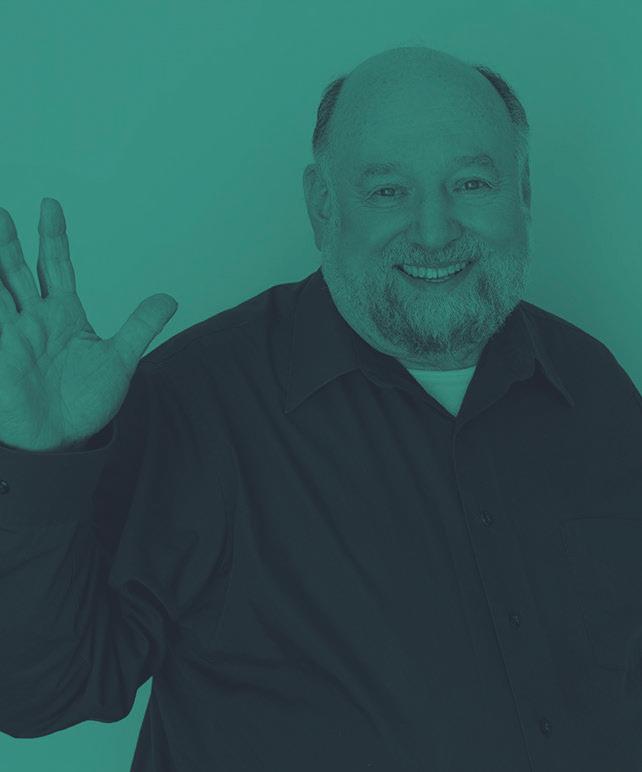
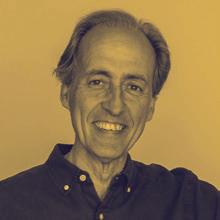 by Miquel Rossy
by Miquel Rossy
Blanca was a high school geography and history teacher. It had been nine years since she had arrived in a small town in inland Catalonia. She started as a teacher just after finishing her degree in humanities. The years went by and little by little she passed the professional growth phase. Every year her experience and reputation grew.
The students knew her well. She didn't need to raise her voice; a small gesture was enough to silence the boy who was talking loudly with his classmate. Everyone knew she didn't like to shout. She created a calm working atmosphere: she made demands on the students without jeopardising her good relationship with each of them.
Blanca's parents had grown older and now her mother, who had Parkinson's disease, required more attention. So, the whole family had to move back to the city where she was born. And of course, Blanca and her two children had to change schools. She got a job at the school she had attended. Her colleagues included some of the teachers
who had taught her! She thought the change would be easy. In the end, she felt at home in that teacher's lounge that had witnessed her complaints about grades, conversations about her professional future and the occasional teary confidence with a teacher...
The school year began. She was not surprised that from the start the students tried to test her to see how far they could go. It is their job, of course. She was counting on the fact that she was still a new teacher to them and had already been through that. What did surprise her, however, was the realisation that she was finding it much more difficult to get them to be quiet and attentive. Her usual tricks weren't working!
For example, she was surprised that staring at a distracted
Your personal brand as an educator is the reflection of your identity in your students
student was not enough to make him change his attitude and get down to work. She continually had to ask them to be quiet. Especially with the secondary students, she had to start punishing those who repeatedly spoke out, stood up or questioned the work she asked them to do.
Even in tutoring sessions, the students did not trust her the way they did at the other school. She could see it in the looks in their eyes, and in their lack of interest during personal conversations. And this had always been her strongest point. At the other school she had a great reputation as an adviser...
What had worked until then stopped working!
Blanca then understood what it meant to have a personal brand. She had experienced firsthand. She had to start building her own reputation again! She had to go back to being a branding teacher, a branded teacher.
We all have a personal brand, even if we don't work at
it. Personal branding is not just for athletes, singers and movie stars. We have a personal brand as people exposed to other's judgment, as all teachers are. Whether we like it or not, we are always communicating and being judged. Students and families are always looking at us. This is why we have a brand even if we are doing no “branding”, that is, deliberately guiding and consolidating our brand. Our brand, in short, is how we are seen.
Talking about personal branding is certainly a call for personal growth. It is obvious that if we improve personally, we also improve our brand. But your brand is not just about wanting to improve as a teacher. Your brand is not the way you are, but the mark you leave on others. Your brand is what is projected about you.
Your personal brand as an educator is the reflection of your identity –your way of being, your convictions and your purpose– in your students through your behaviour that is consistent with it.
Any brand is a communicative act; in fact, it is the synthesis of all communication that reaches us about a person or an organisation. Every communicative act consists of constructing a sign: a material element that we capture through our senses will signify an emotional or conceptual reality. Thus, all brands are signs. It doesn't matter what type of brand it is: corporate, personal, city, country... All brands work the same. In fact, personal branding is not actually a transfer of corporate brands to people, as many people think. The first brands, communicatively speaking, are actually personal brands. We all continually make judgments about others, starting from our very first contact. Basically we judge their affinity with us and their competency, as well as whether we can trust them.
Whenever we educate, we are communicating. This is a truism: there is no education without communication. We educate first with our words (that is, with our planned communication); that is, we carry out part of our teaching task through words: we instruct and equip students with knowledge. But we especially educate –share wisdom–through our behaviour, our example, the coherence between what we are and how we act.
Therefore, a personal brand is more a sign than a symbol. There are very simple signs, such as road signs. However, a brand sign is complex. And personal brands are particularly complex, because, after all, people are complex, or, to put it positively, we are rich.
The work of personal branding consists precisely of simplifying the sign to make it more obvious. It can be simplified in the signifier, in the things we grasp through the senses, by limiting them to the minimum: institutional brands are limited to a single colour, a single typeface, a single “claim”, a single image. However, it is very difficult for us to effect this simplification in the classroom, where we are observed by students at all times, down to our most insignificant details.
We can simplify the sign and build our brand by avoiding contradictions in meaning; that is, after having reflected on our identity, we should express it coherently, or rather live it coherently. This requires knowing who we are, what we believe in and what we want to achieve in order to set goals that reflect our identity.
Miquel Rossy Philologist and baccalaureate and secondary school teacher for 29 years. Graphic designer. He has created institutional identities for foundations and educational organisations: Institució Familiar d'Educació (where he has been Brand Manager for over 20 years) the Carmelitas Teresas de San José group, Colegio Diocesano San Ildefonso, EASSE, etc. He is the author of the books published by Santillana "Tu escuela, una gran marca" (2017) and "El secreto del marketing educativo. The teacher is the brand of the school" (2020. Through brandingescolar.com, he partners with schools in their branding and marketing strategies. He is a podcaster, lecturer and trainer.

 by Antonio Bernal Guerrero
by Antonio Bernal Guerrero
When we limit our reflection to the school system, there will be little disagreement if I assert that the quality of education is linked to the help we offer students for their full development. This statement, repeated so often and in so many ways over time, is often nothing more than a cliché among the myriad commonplaces in which our existence unfolds. If you think about it, it is nothing more than an abstraction. In reality, it is all about helping the education of each student, a unique being, someone unrepeatable who is not mass-produced. Circumstances change, obviously, and we are going through times of
Each person claims recognition of his or her dignity, claims their place in the world, whether they know it or not.
enormous uncertainty. Yet there is an equally latent truth: each person claims recognition of his or her dignity, claims their place in the world, whether they know it or not. We cannot approach this noble goal if we give up the search for meaning, the attainment of knowledge that can lead to wisdom. Avoiding the limitations of functionality means opening up to a broader, more substantive and deeper learning agenda.
I cannot hide my discouragement when I read, hear or see, more often than I wish, opinions that instrumentalise education for different purposes, turning it into a multicoloured dance of small miseries; or that propose partial or simple solutions to the problem of educational quality; or that allow themselves to be carried away by a nostalgic idealisation of the past; or even worse, that draw apocalyptic scenarios where teachers and schools will be superfluous. If we have learned anything in recent decades, it is that analysing and understanding education

Analysing and understanding education is a very complex undertaking. It cannot be remedied with short-term solutions
is a very complex undertaking. It cannot be remedied with overly simple ideological approaches or short-term solutions (those hasty solutions often adopted by the latest political agenda). Here, we intend to not outline this complexity but to assert that the problem of educational quality cannot be solved simply by common sense, by providing sound reasons. Today, this problem requires a renewed agenda that reassesses education and raises its status in society. And the most significant agents of change in it are teachers and researchers. Not only does
teaching change and fill one's own life, it also changes others' lives. Referring to the letter Albert Camus sent to his beloved childhood teacher in Algiers, Germain Louis, practically one month after receiving the Nobel Prize for Literature in 1957, is paradigmatic.1
A great deal of research has shown the importance of teachers in students' education. The best learning opportunities certainly depend on which teachers are responsible for providing them. And we thus enter the fraught terrain of teacher training. We should not approach it as if the world had not been transformed and as if the research performed to date has taught us nothing.
George Steiner used to say that there is no craft more privileged than teaching, that the “libido sciendi” is engraved in the best men and women: “To awaken in another human being powers, dreams beyond one's own; to induce in others a love for that which one loves; to

make of one's inward present their future; that is a threefold adventure like no other”.2 This passionate commitment through which you perceive that your work surpasses you, that it contributes to the common good, that it gives you fulfilment, is nothing other than a “vocation”. Some teachers feel this vocation. However, not all do. There are those who consider teaching merely a “job”, a way of earning a living. And, continuing with the third “work orientation” within the types pointed out by Seligman,3 others consider it a “career”, which has a deeper personal implication, since in addition to earning a salary they are also satisfied through promotion. However, when the promotions stop, they look for compensation and meaning elsewhere. Although being either type does not guarantee that a teacher is better,4 we can assume that their sense of professional identity and level of commitment will differ in each.5 All the decisions taken on behalf of a commitment to educational action will contribute to improving educational quality provided they imply a solid sense of moral purpose, effectiveness and a capacity for initiative and influence.
What to do in the midst of socially and culturally changing contexts, in the face of technological challenges, in the face of the pressures of an increasingly “performative” agenda? The profiles of the past are no longer useful. Obviously, training in the curricular fields is still required, but intellectual challenges are gaining renewed interest due to the need to cultivate a critical sense, reflective capacity and creative thinking. Relational and emotional challenges are particularly coming to the fore. Professional identity cannot be described as merely a rational process but is also inevitably emotional.6 In this sense, professional identities are subject to the same processes of change and resistance as personal identities, which means considering the teacher a person, not an employee. Likewise, as many studies have shown, the teacher's connections with other teachers and with the organisational culture, with the institutional ethos, favour the individual and collective well-being that has a positive impact on students. Continuing to view teacher training as a
Intellectual challenges are gaining renewed interest due to the need to cultivate a critical sense and reflective capacity
linear continuum is simplistic and impractical.
Becoming aware of what teaching entails means accepting that one is constantly having a singular, unrepeatable experience. Even if we pursue it, teaching excellence is never achieved. We live in a process of permanent rediscovery about who we are and what influence we have through continuous study and reflection on what education and the teaching profession themselves consist of and how they develop, which is not restricted to merely instructional processes. The richness and vigour of our reflection should enlighten teacher training, especially focused on a willingness and on all the qualities that invite us to enthusiastically offer our very best.
Antonio Bernal Guerrero is Professor of Theory and History of Education at the University of Seville. He founded and directs the Pedagogical Research Group of the Person. He has served as visiting professor at several international universities and is an expert at different agencies assessing research and faculty.
1 “...I have just been given far too great an honour, one I neither sought nor solicited. But when I heard the news, my first thought, after my mother, was of you. Without you, without the affectionate hand you extended to the small poor child that I was, without your teaching and example, none of all this would have happened” (p. 53). Cfr: Camus, A. (2022). “Cartas a mi maestro”. Barcelona: Editorial Platform.
2 Steiner, G. (2016). “Lecciones de los maestros'. Madrid: Siruela, p. 173.
3 Seligman, M.E.P. (2003). “La auténtica felicidad”. Barcelona: Ediciones B.
4 Teacher hiring is an unresolved issue. It has been debated and different proposals have been made. One possible way to strengthen the teaching profession is to improve initial hiring. In this sense, for example, a formula analogous to the MIR for the specialised medical profession has been proposed for secondary school teachers. Whether this or another formula is used, there is a need to improve teacher hiring (see: F.L. Rupérez (2014). “Fortalecer la profesión docente”. Madrid: Narcea). Nevertheless, the social recognition of teachers and the improvement of working and organisational conditions are necessary but insufficient.
5 Day, C. (2014). “Pasión por enseñar. La identidad personal y profesional del docente y sus valores'. Madrid: Narcea (5th ed.)
6 Teaching is a very complex process that requires intellectual and emotional energy. Passionate communication of knowledge is the best antidote to any attempt to supplant the teacher. On the other hand, the diversity of students and training contexts, in increasing progression, require a huge emotional effort.
 by Javier Bahón Gómez
by Javier Bahón Gómez
How should someone be trained to practise one of the most complex professions in the world? Who would be capable of earning sufficient qualifications, in addition to technical skills (hard skills) in pedagogy, psychology, sociology, anthropology, didactics in different fields, emotional intelligence, rigorous thinking, cooperative learning, effective communication, digital competencies, special educational needs, social skills, competency design and everything else that could be added?
The problem is that nothing on this list is optional. It encompasses everything a teacher has to have in their toolkit in order to educate in the classroom and not die trying. I have intentionally not listed the soft skills, and after adding them we can imagine a superhero loaded with “talent” and the right “temperament”. Without lifelong learning, the development of these qualifications would be unthinkable. However, every moment must be taken advantage of because time flies, and so does the evolution of the world in which our students have to develop. So, with no time to lose, we need teachers who were born with genetics that enhance some of these essential qualities. Teachers need to be teachers by vocation; this
Teachers need to be teachers by vocation; this is a bad job for people who say, “Well, since I don't know what to do, I guess I'll become a teacher”.
is a bad job for people who say, “Well, since I don't know what to do, I guess I'll become a teacher”. We need their emotional balance to be bombproof and their virtues to include the desire to serve others.
If their educational and service vocation and emotional management fail, it is only a matter of time before they feel burned out and disillusioned, and what is worse, before they start having a negative effect on colleagues and students. If, however, they possess these qualities, the next challenge will be their pre-service training. To put it bluntly, many universities offer a sadly deficient teaching degree. They show signs of stagnation in their teaching and, paradoxically, even in the methods they use to teach future teachers. Thus, it is up to schools themselves to provide good continuous learning, and then each professional has to contribute their own personal interest in continuing education through reading, courses or experience on their own or with colleagues.
The competency-based laws of recent legislatures have sometimes helped to activate this ongoing training and the need for constant professional development. However, for schools and teachers who have reacted slowly and inadequately to change, what has ensued is a growing gap between their teaching reality and what the world needs.
There is a host of causes for any educator to find themselves becoming disgruntled, tired and disconnected from their school's vision or purpose over time. It is no different from other professions, where factors such as work-life balance, the changing demands of the

The toll we pay is more than made up for by that student you manage to help succeed despite their background; a smile on your students' faces
environment, direct dealings with people, the increase in the number of functions each person has to carry, the sense of little recognition, and other such burdens take their toll.
Is there a vaccine for this? We cannot expect a magic potion that will cure everything, but there are clearly very important factors that can help when faced with these more or less objective obstacles. This is how I would explain them to anyone interested:
– Close your eyes and analyse your situation using your personal coherence. If teaching is not the profession that fulfils you, then you're not in the right place. Don't try to make the world change and adapt to you. Be brave and step aside.
– Get trained. The more tools you have in your teaching toolkit, the more fronts you will be able to face and succeed in.
– Give it a try. Fail. Try again. If you stop doing it, only one thing will be certain: every day you will be further from the needs of the profession.
– Rely on your team. Difficult goals, such as carrying out a complete educational project, can only be achieved by a well led team. On our own, we all burn out;
together, we pool knowledge, skills and attitudes.
– Rehearse your smile. Good humour is a must. A teacher who is “a little mad” succeeds in the classroom more than a “stiff” person with loads of qualifications.
– And as I said, this profession requires us to have our emotions well balanced like no other. Day after day, disruptive students, educational needs that we do not know how to or cannot meet, overprotective families, legal changes, some administrative teams without clear ideas or uncooperative colleagues, among many other reasons, can generate extraordinary instability. But don't forget that everyone reacts differently to the same situation. Emotional flexibility and flexibility of thought are helpful. Therefore, rigidity in either sphere is fatal, and this rigidity/flexibility duet does not depend on anything outside you; we forge this vision throughout our lives by deciding how we want to be and how we refuse to be.
In short, as my dear friend Eugenio Ibarzabal would say: “It's worth it, but there's grief”. The toll we pay is more than made up for by that student you manage to help succeed despite their background; a smile on your students' faces; a fleeting “thank you” from the student from whom you least expected. Remember, it's worth it.
Javier Bahón Gómez is a teacher and pedagogue with 20 years of experience in the classroom and in school management. Currently, he is the CEO of TÚinnovas Lab Educativo, co-director of the International Centre for Cooperative Learning and a Certified SDG Ambassador. He is a writer, consultant and disseminator. His most recent publication is “¡Nos Roban La Selva! Sumatra and the orangutans', Editorial TÚinnovas.
We are already preparing the next issue of the magazine Diàlegs. Do you want to contribute to it?
This issue will be dedicated to education for being, for integral human development. According to Andy Hargreaves, recent studies show that “well-being is important for learning and learning is important for wellbeing”. If we add that we are at the dawn of the AI era and machines are beginning to gain ground, if we want a world run by and for people, education should enhance and value everything that distinguishes human beings and enables them to live full lives.
Send your contribution to revista@impulseducacio.org
State the section to which you would like to contribute: Project, News, Experiences, In Depth, or the Opinion column.
Articles
Articles must be 1,500 words in length.
Authors must send in:
- Title - Subtitle - Author bio (40 words)
- Photo of the author
- Publishable email (if you wish)
- Social media profiles (preferably Twitter and/or LinkedIn)
- Bibliographic references
The quotations included in the text must be accompanied by their corresponding reference as a footnote. Data, figures or references to reports must be accompanied by the corresponding footnote. If you suggest a highlight, it has to be about 30 words in length.
Opinion column
Opinion columns must be 900 words in length.
Authors must send in:
- Title
- Subtitle - Author bio (40 words)
- Photo of the author
- Publishable email (if you wish)
- Social media profiles (preferably Twitter and/or LinkedIn)
- Bibliographic references
The quotations included in the text must be accompanied by their corresponding reference as a footnote. Data, figures or references to reports must be accompanied by the corresponding footnote. If you suggest a highlight, it has to be about 30 words in length.

 Avda. Montserrat Roig, 3. 08195 Sant Cugat del Vallès
Avda. Montserrat Roig, 3. 08195 Sant Cugat del Vallès